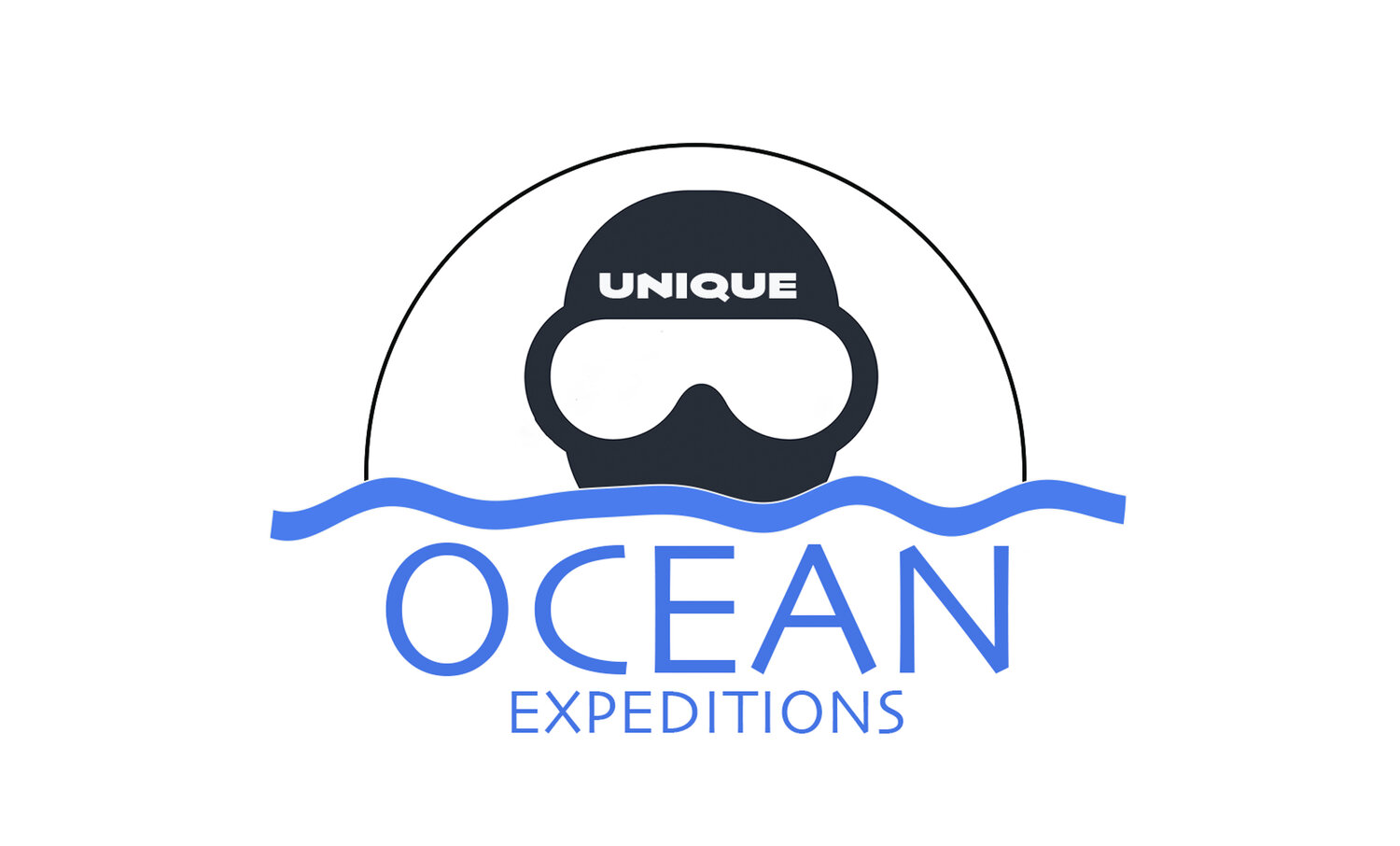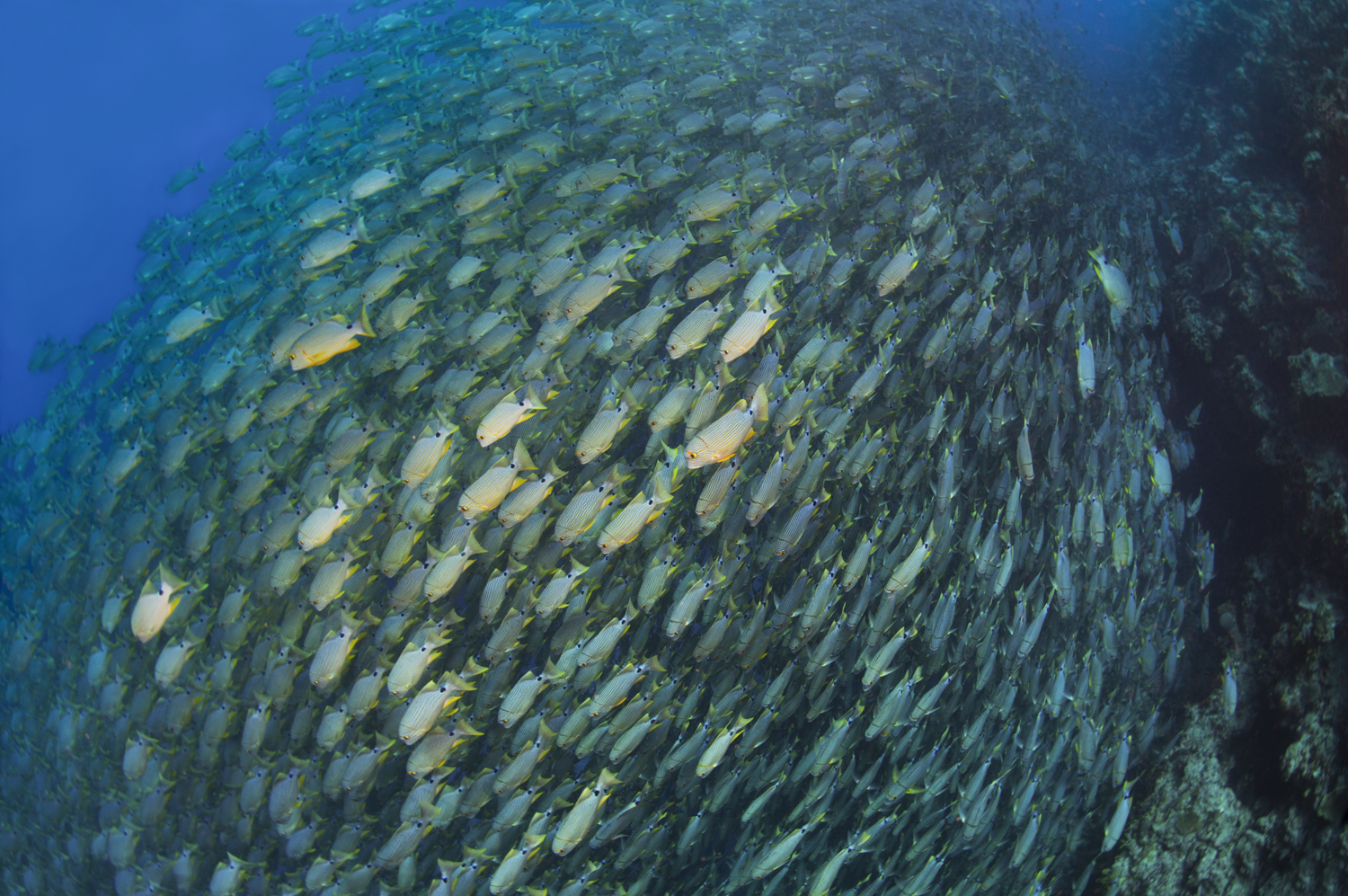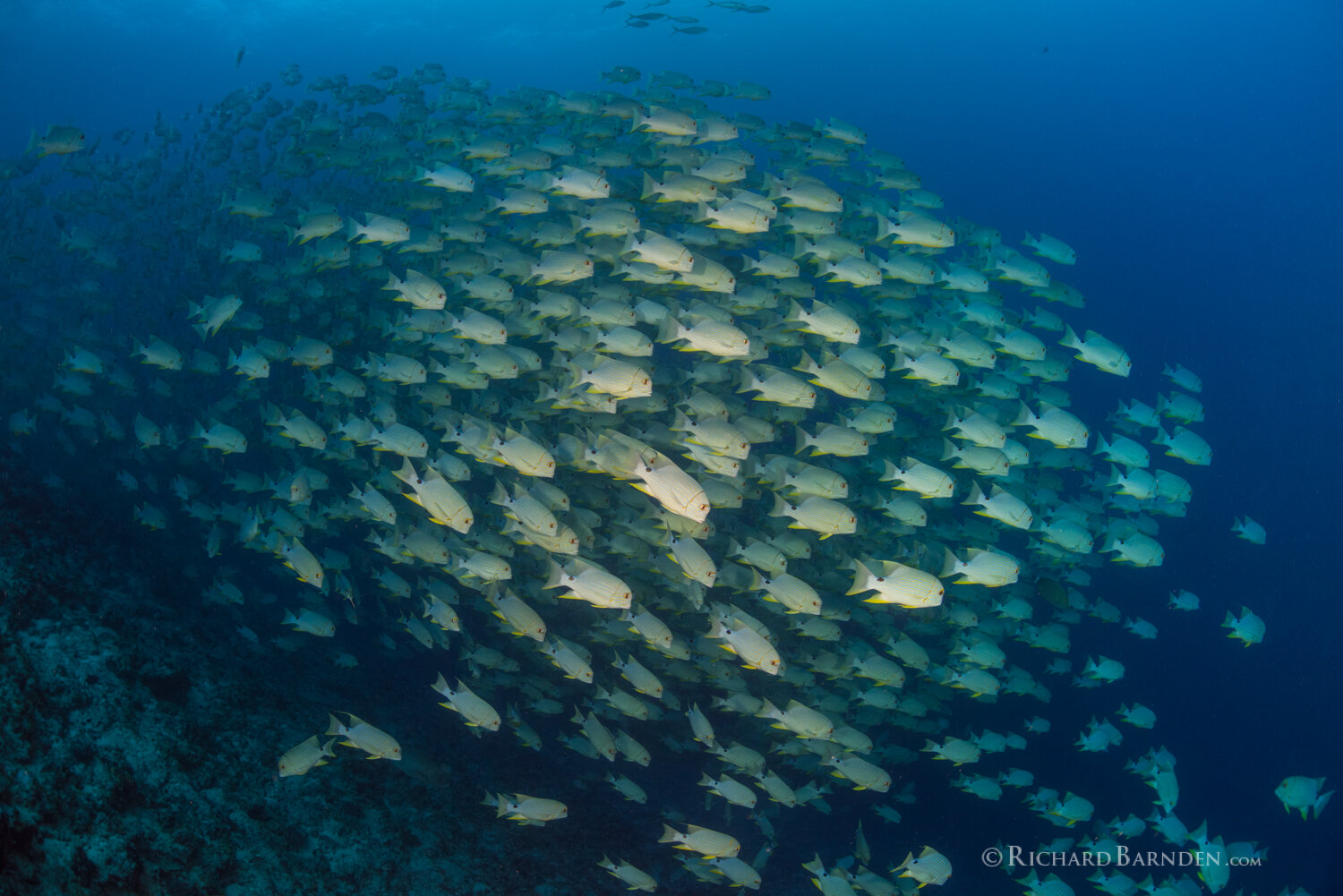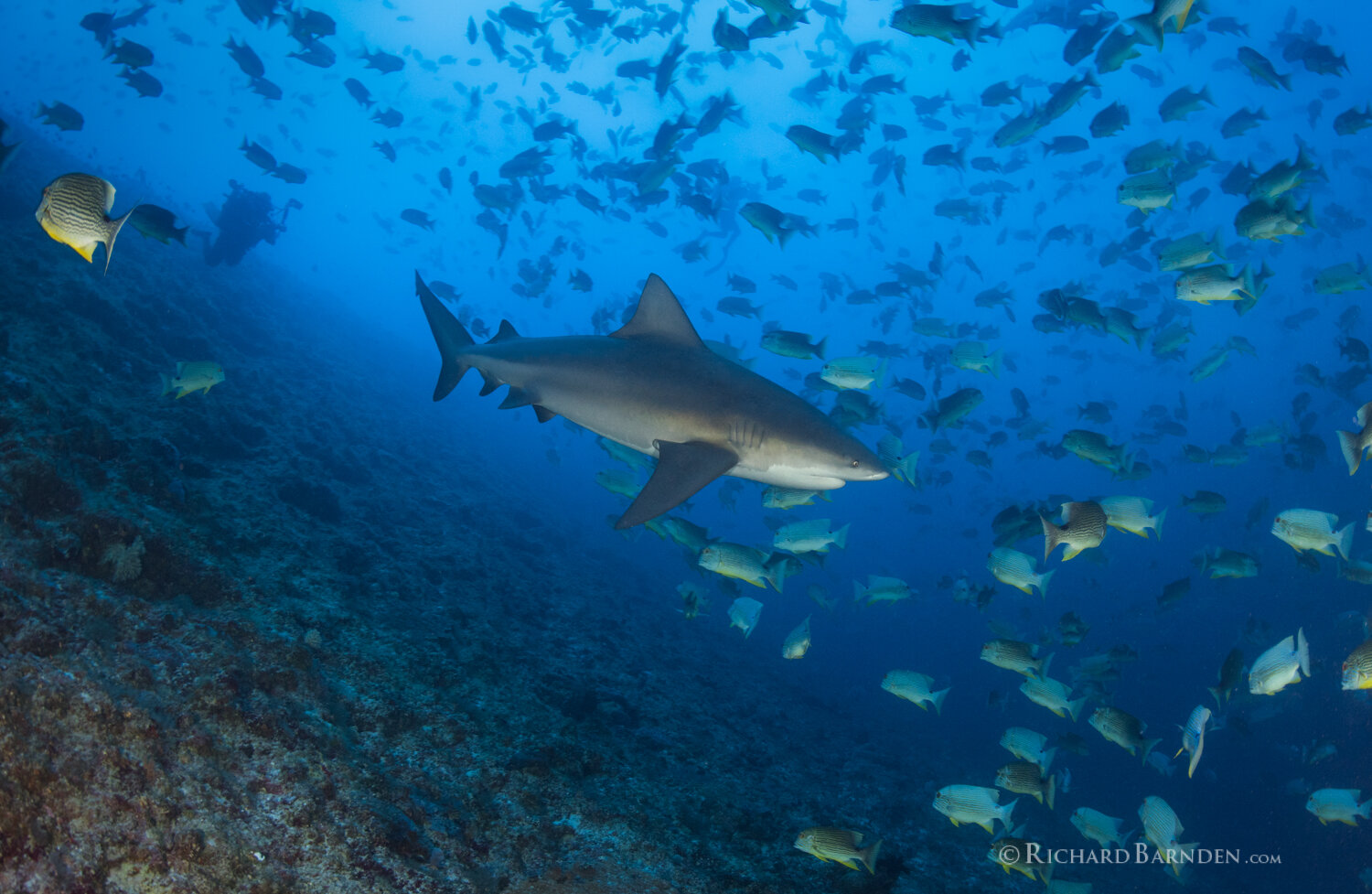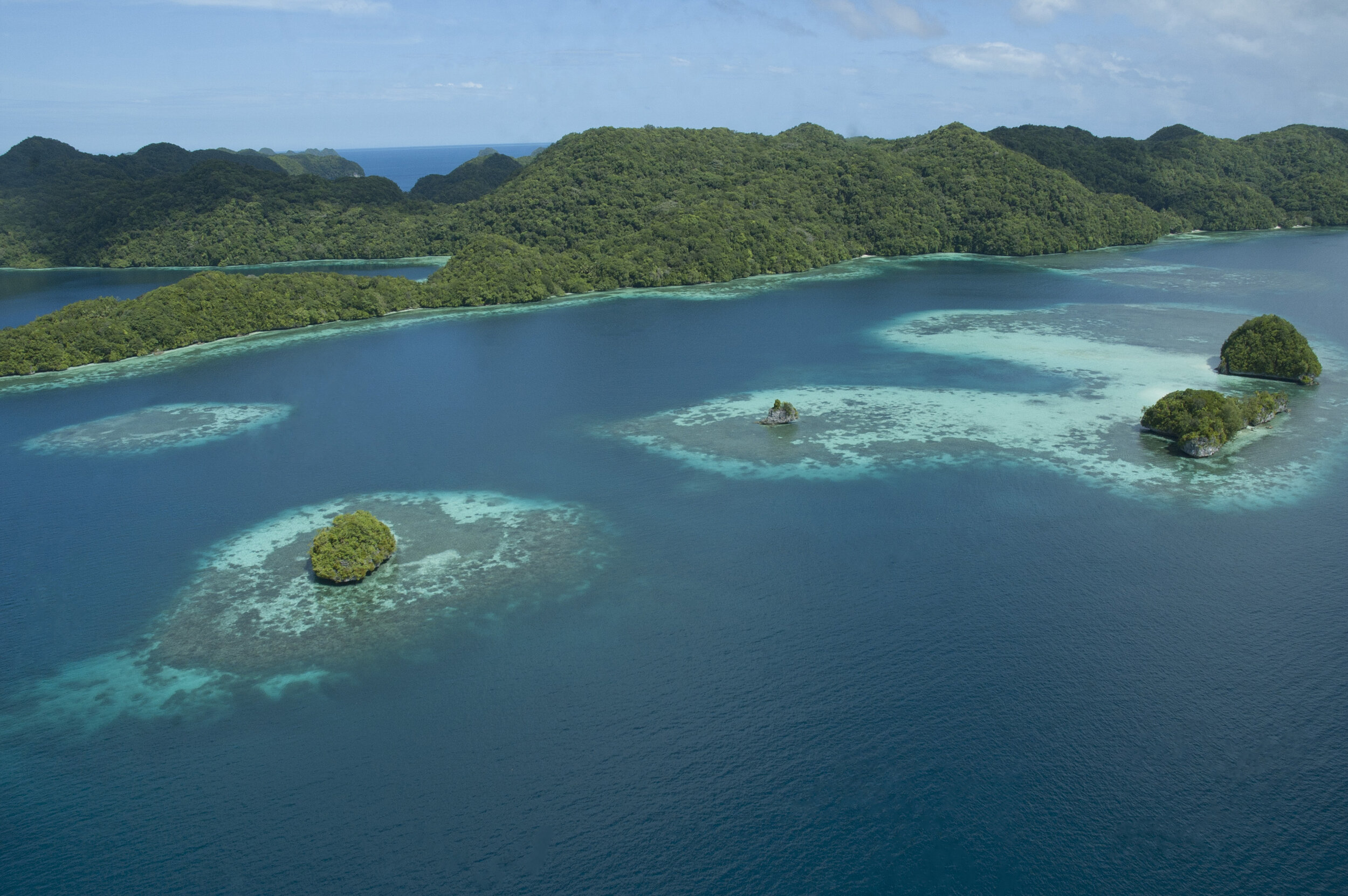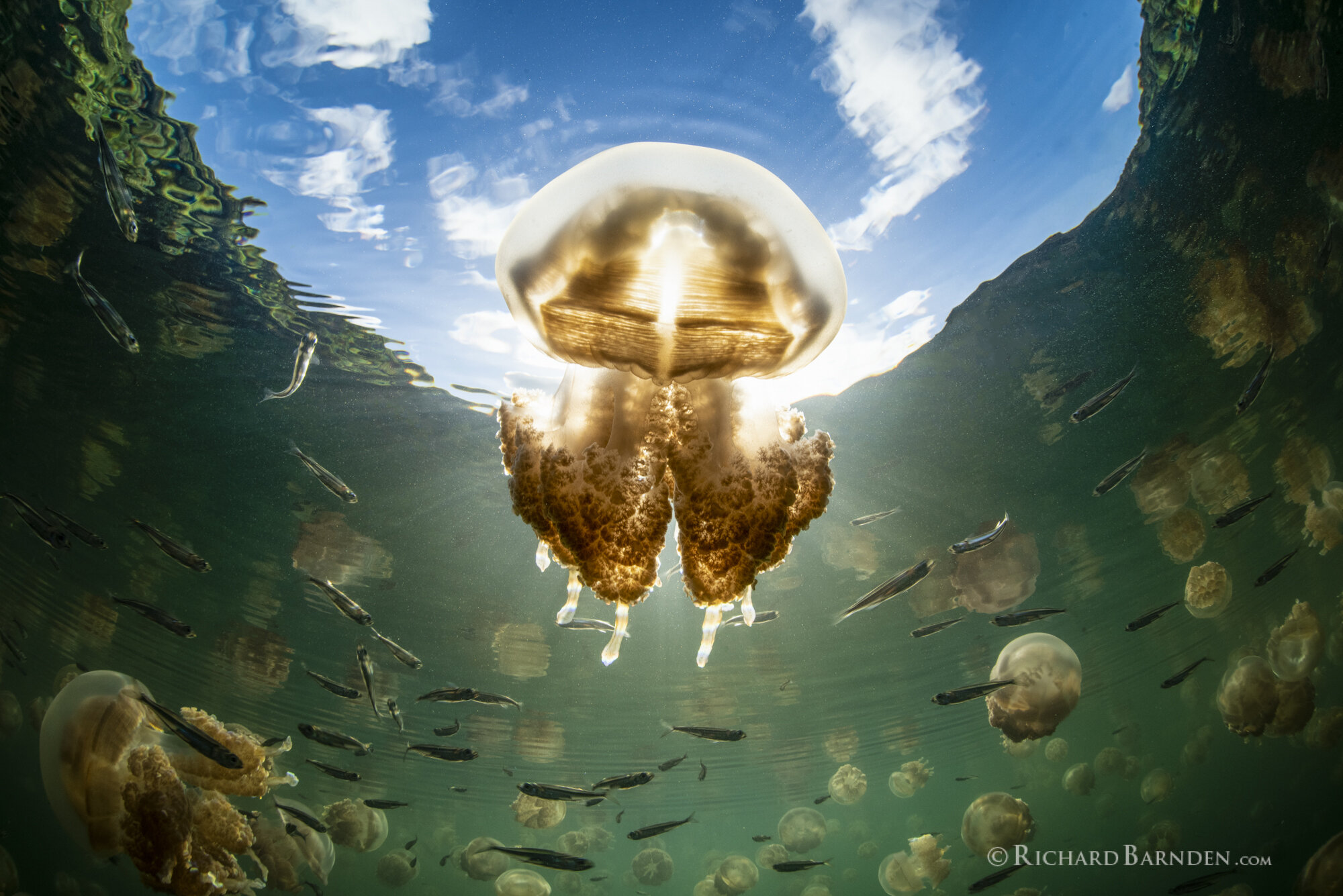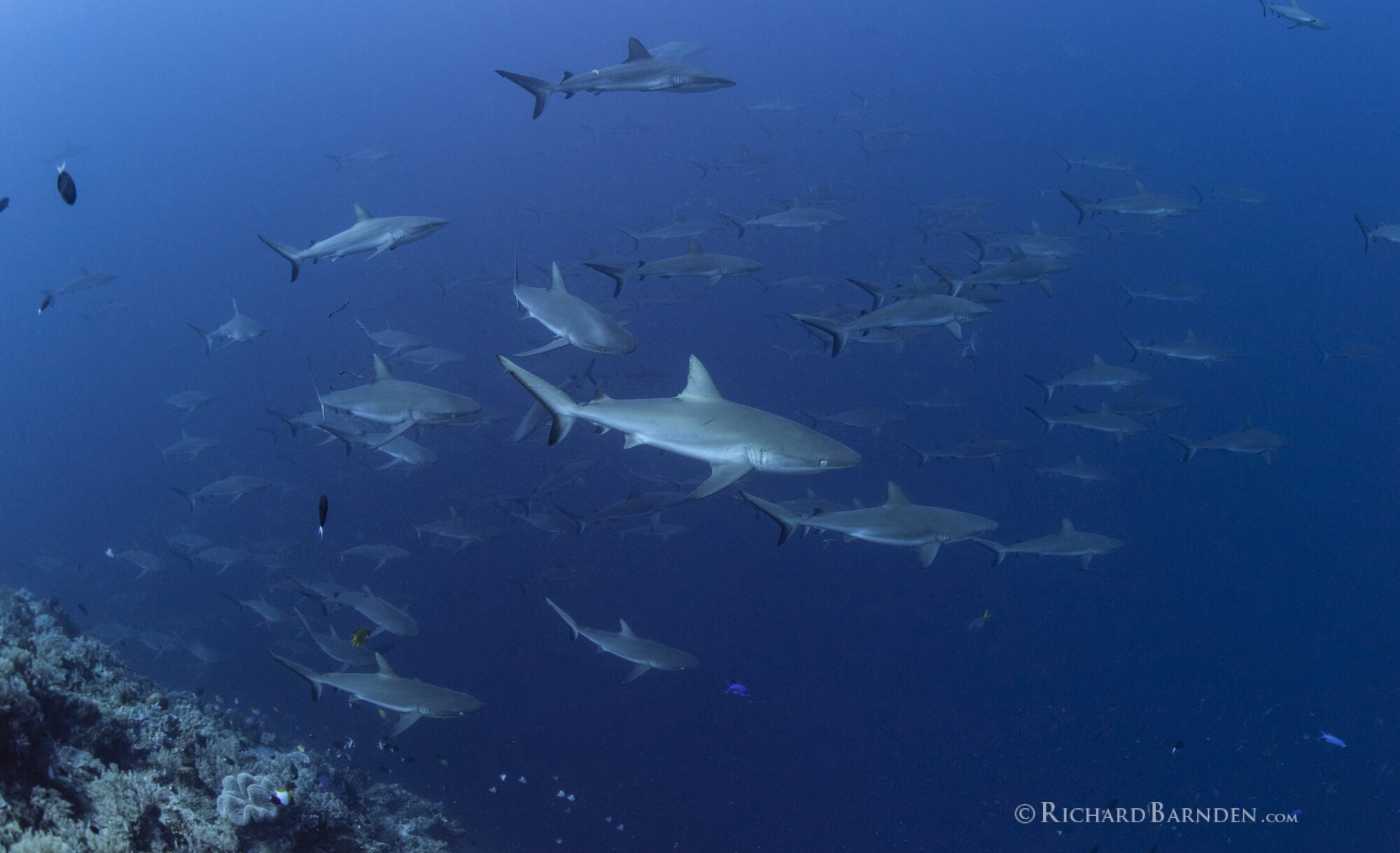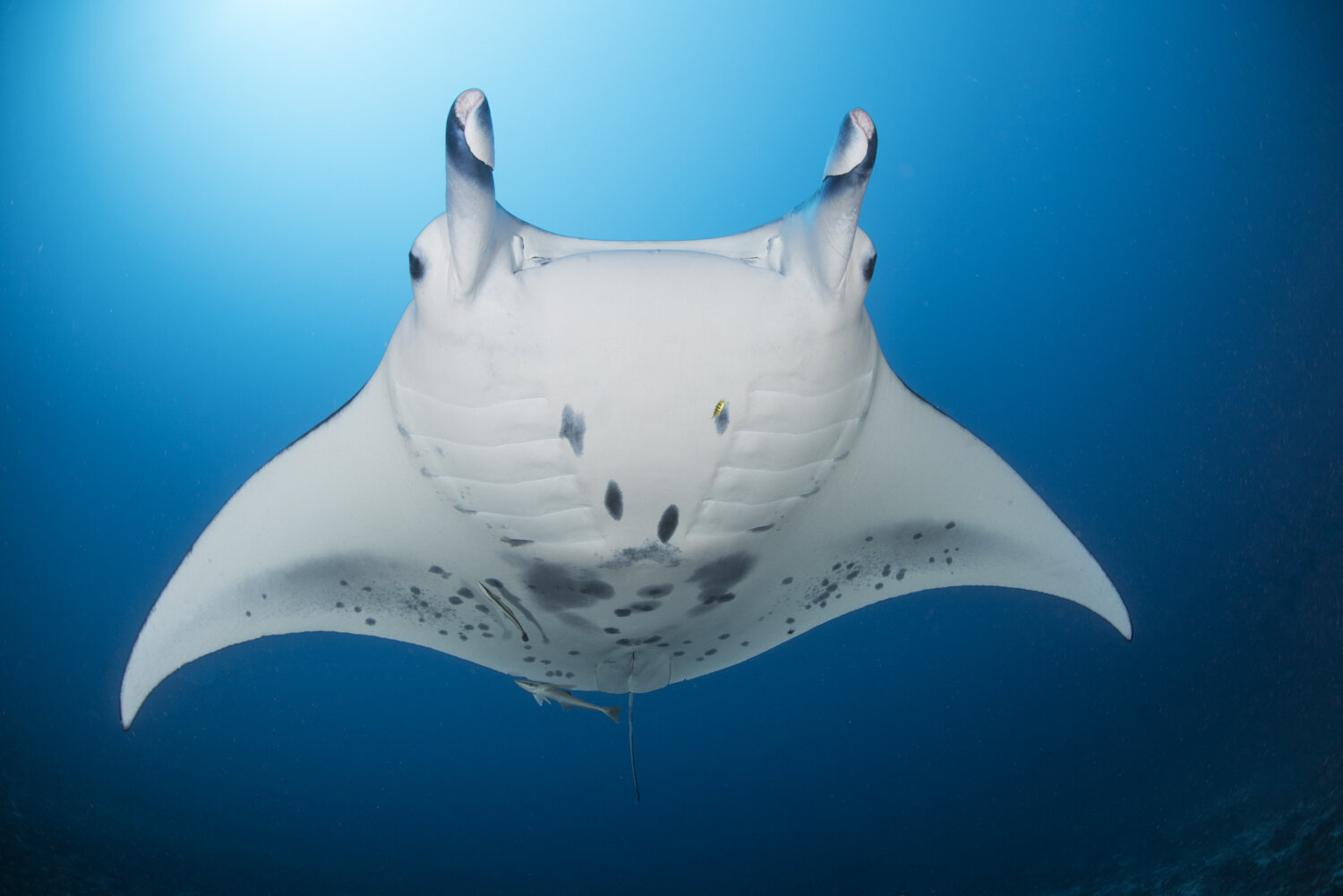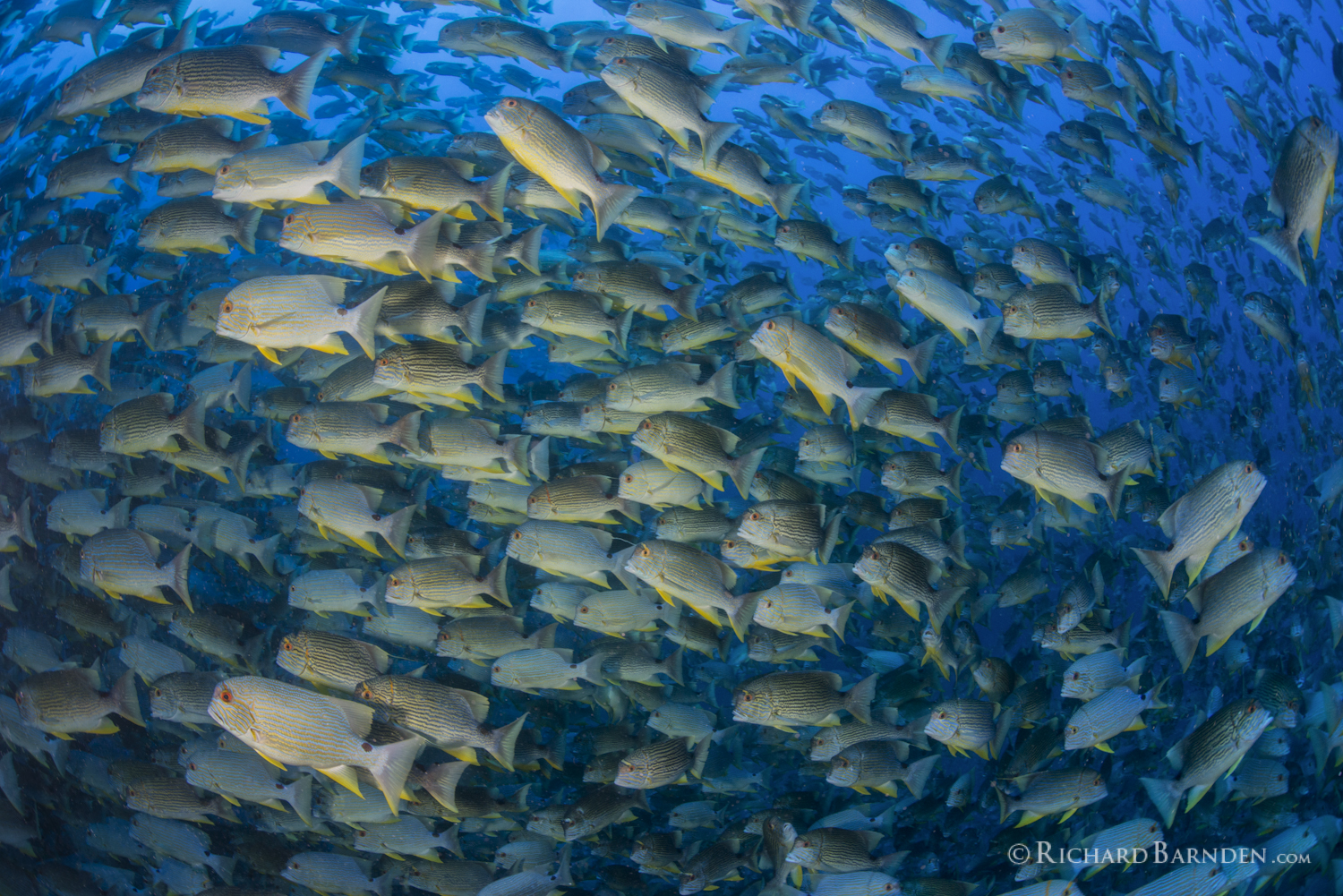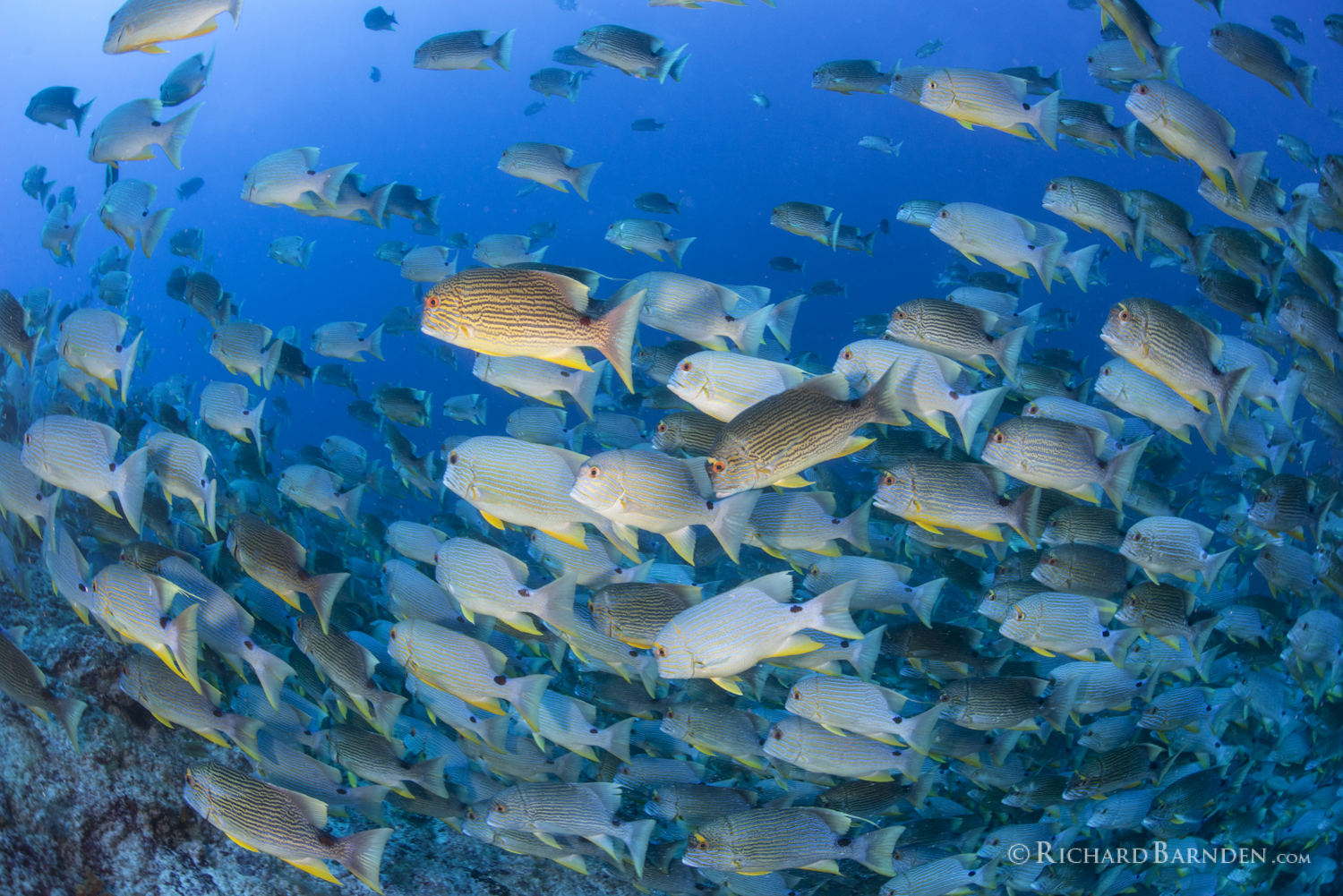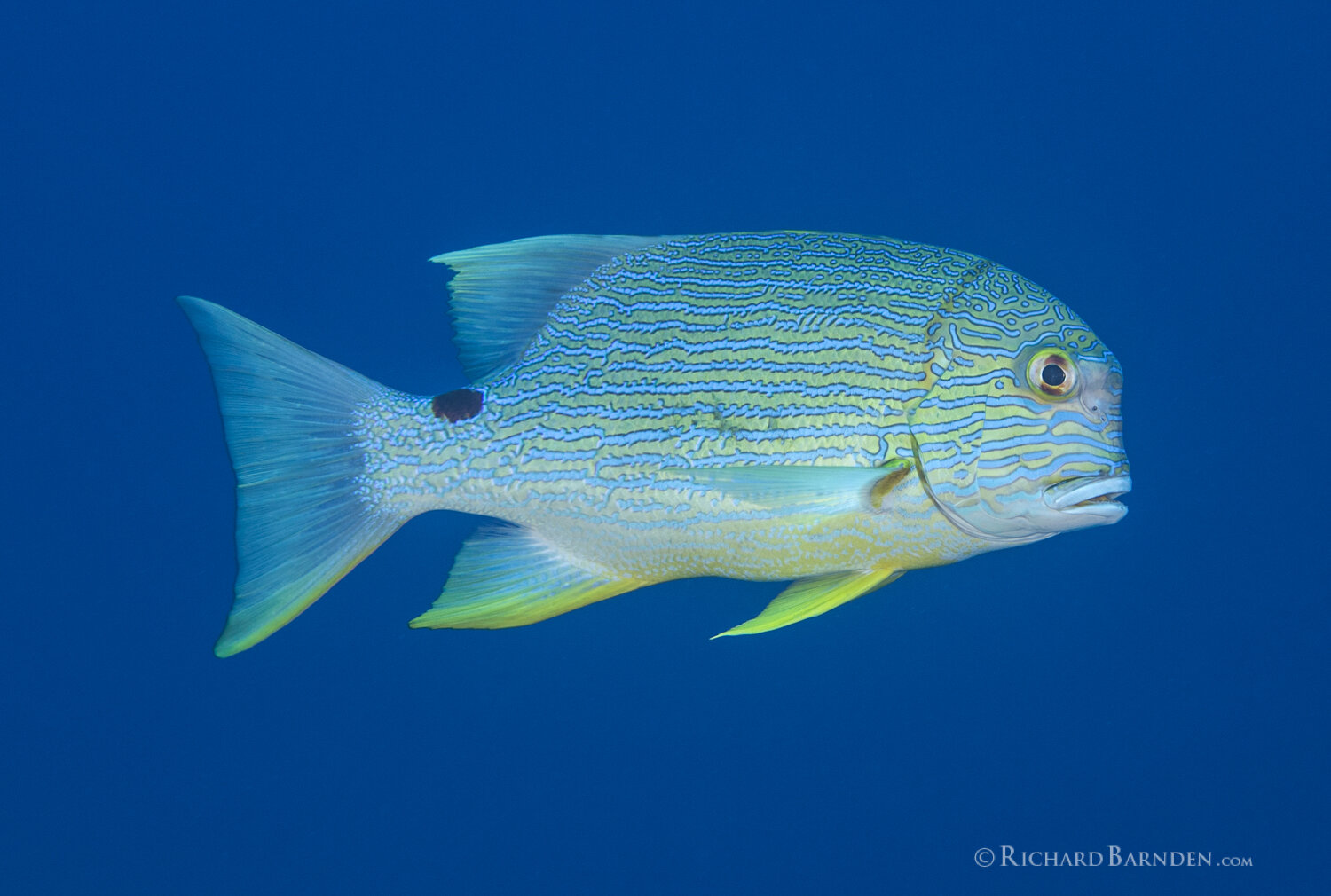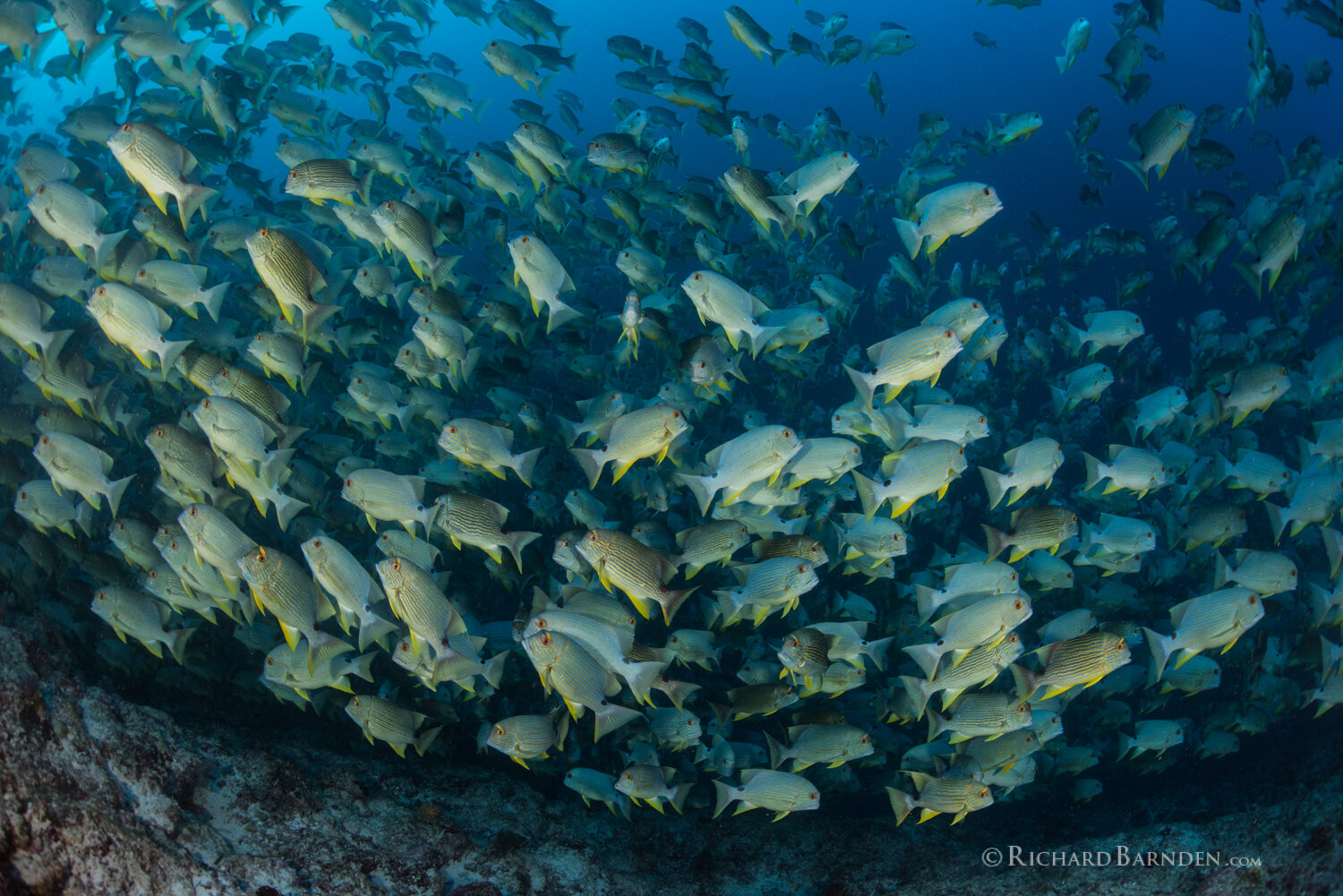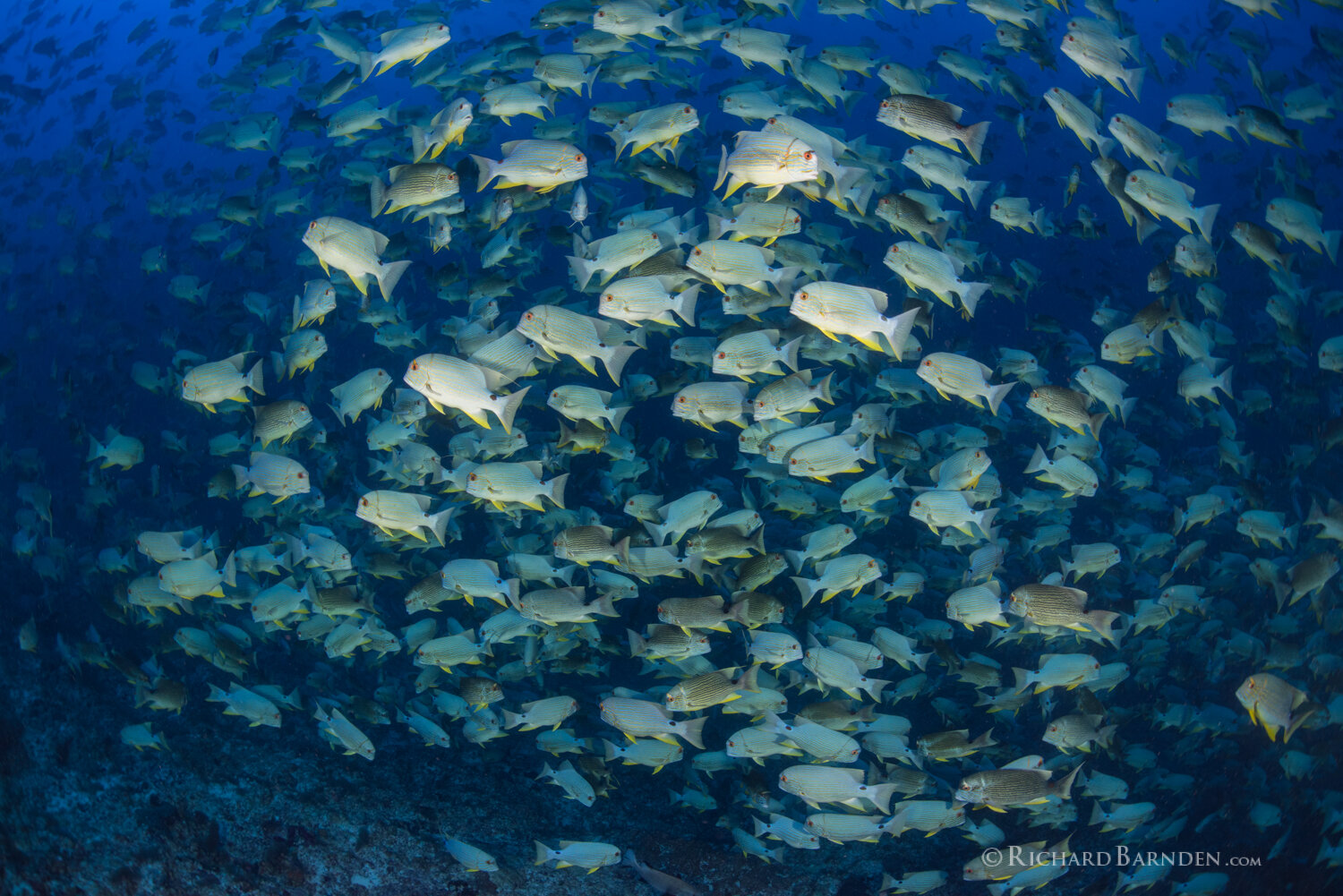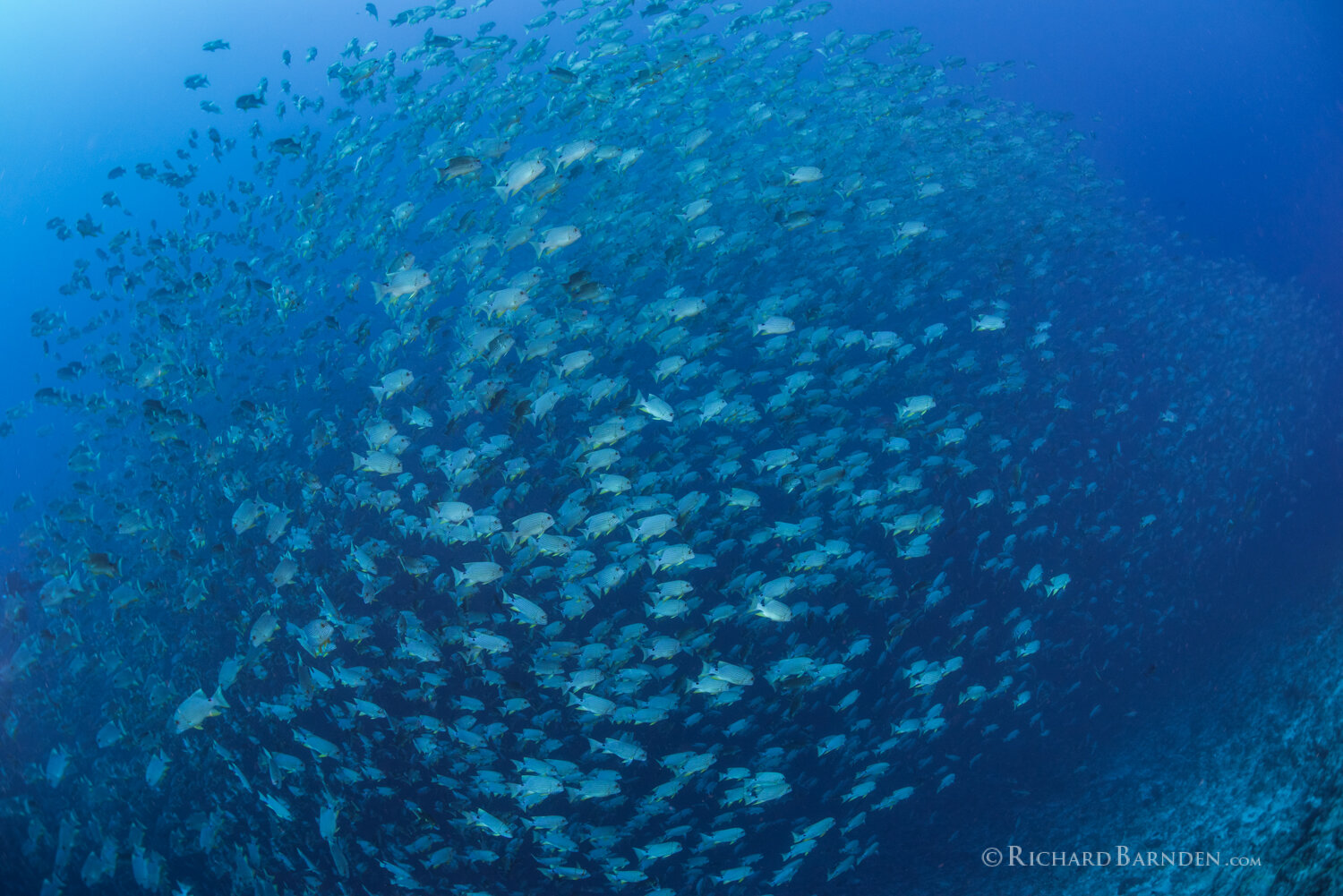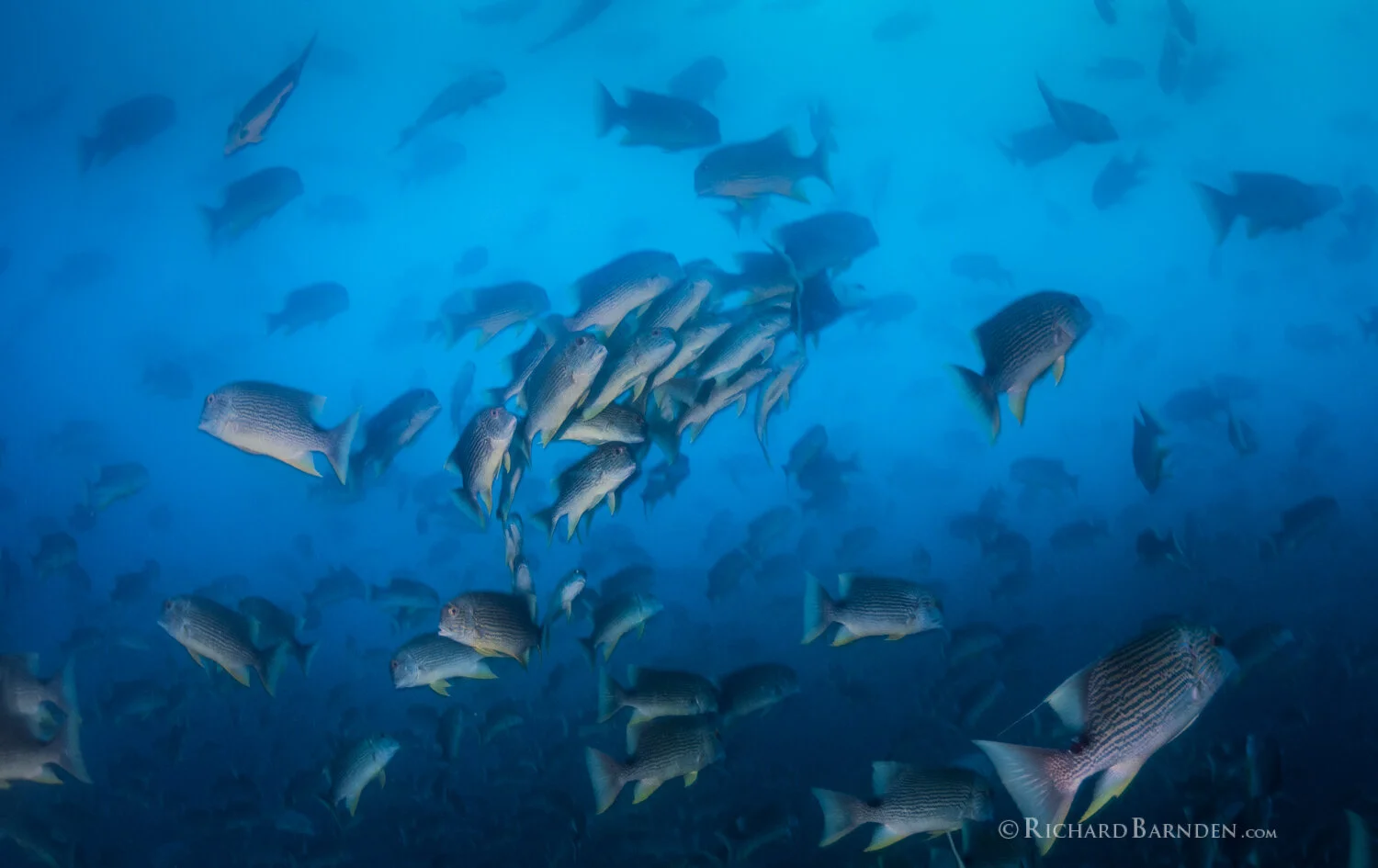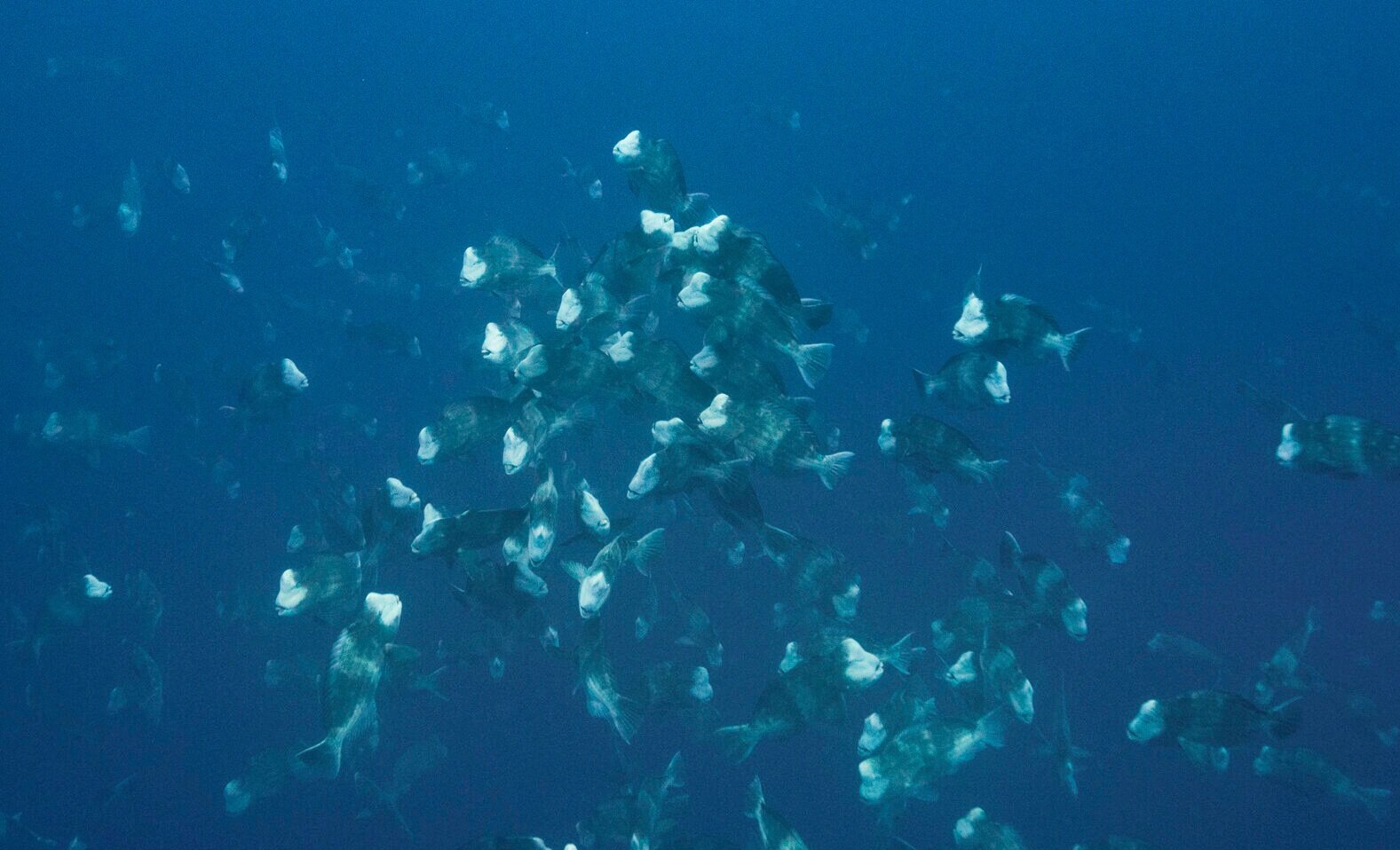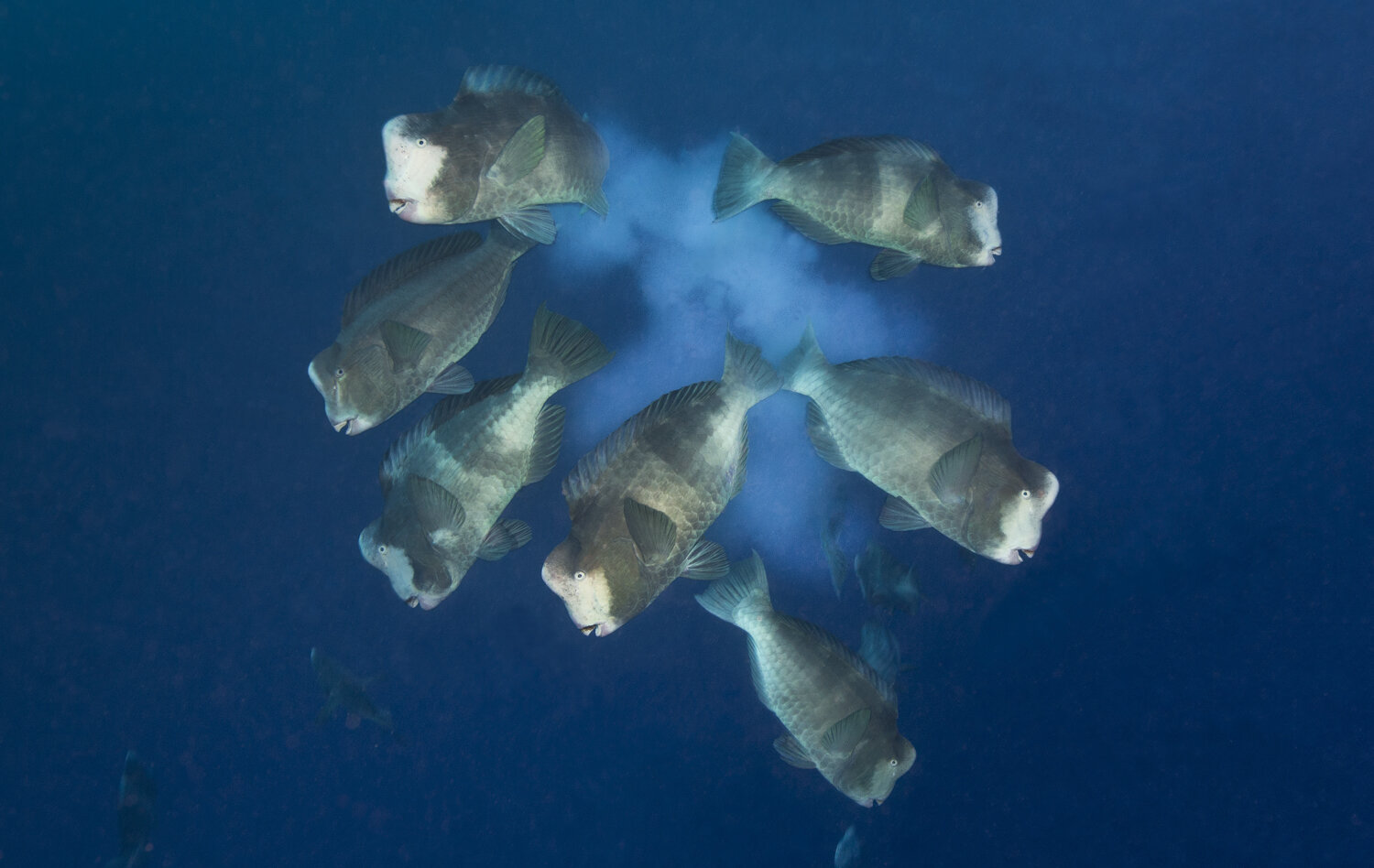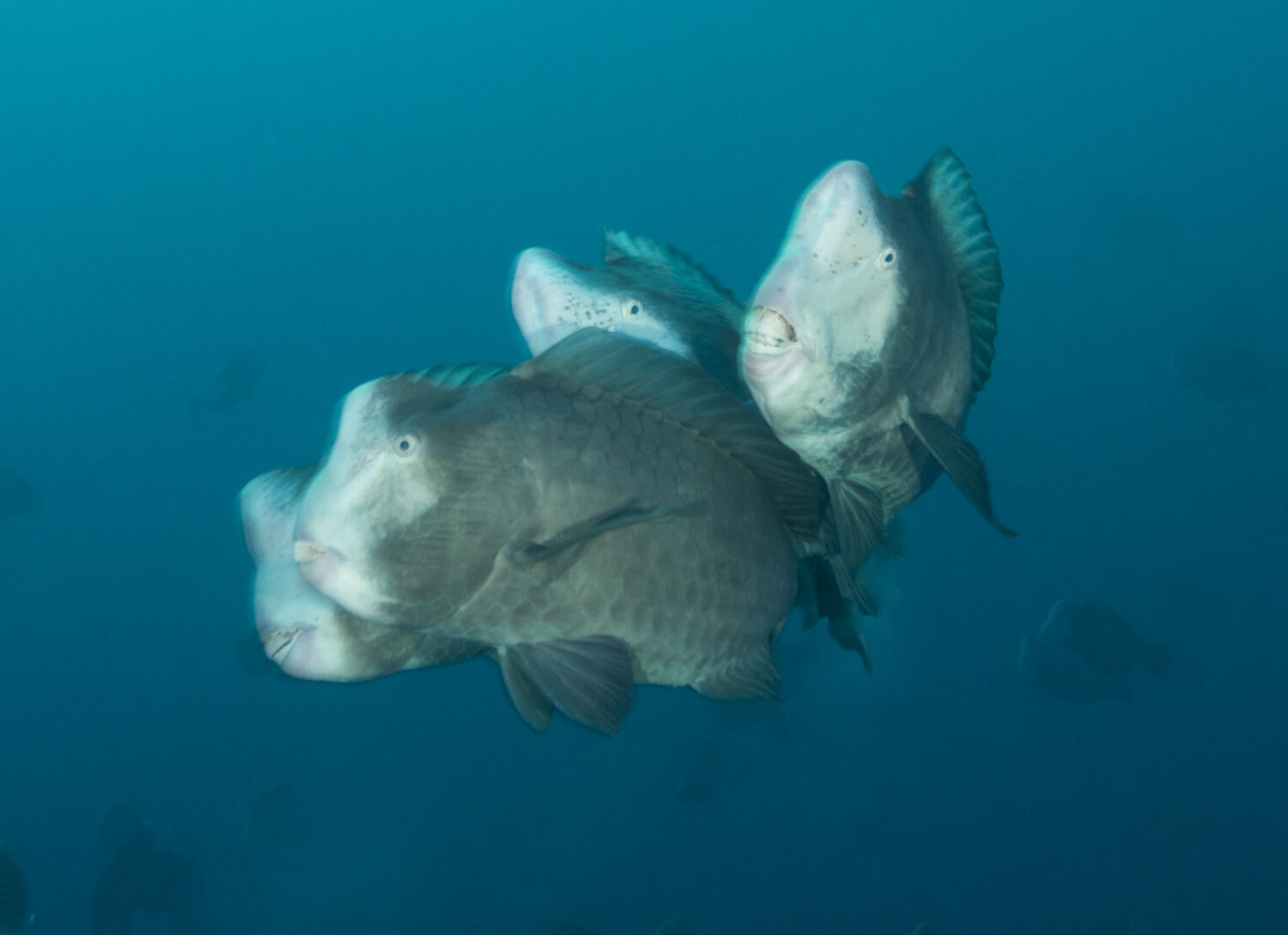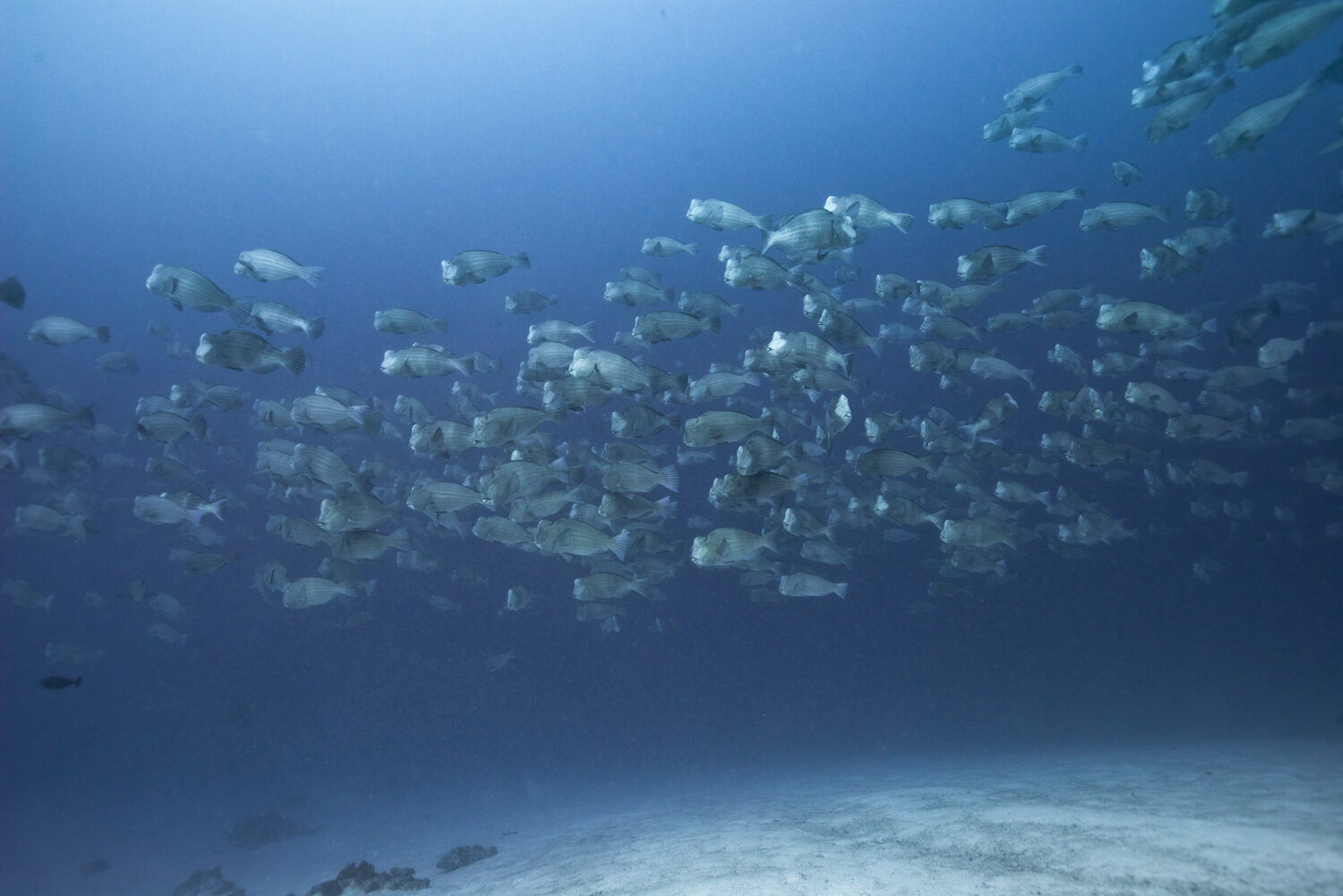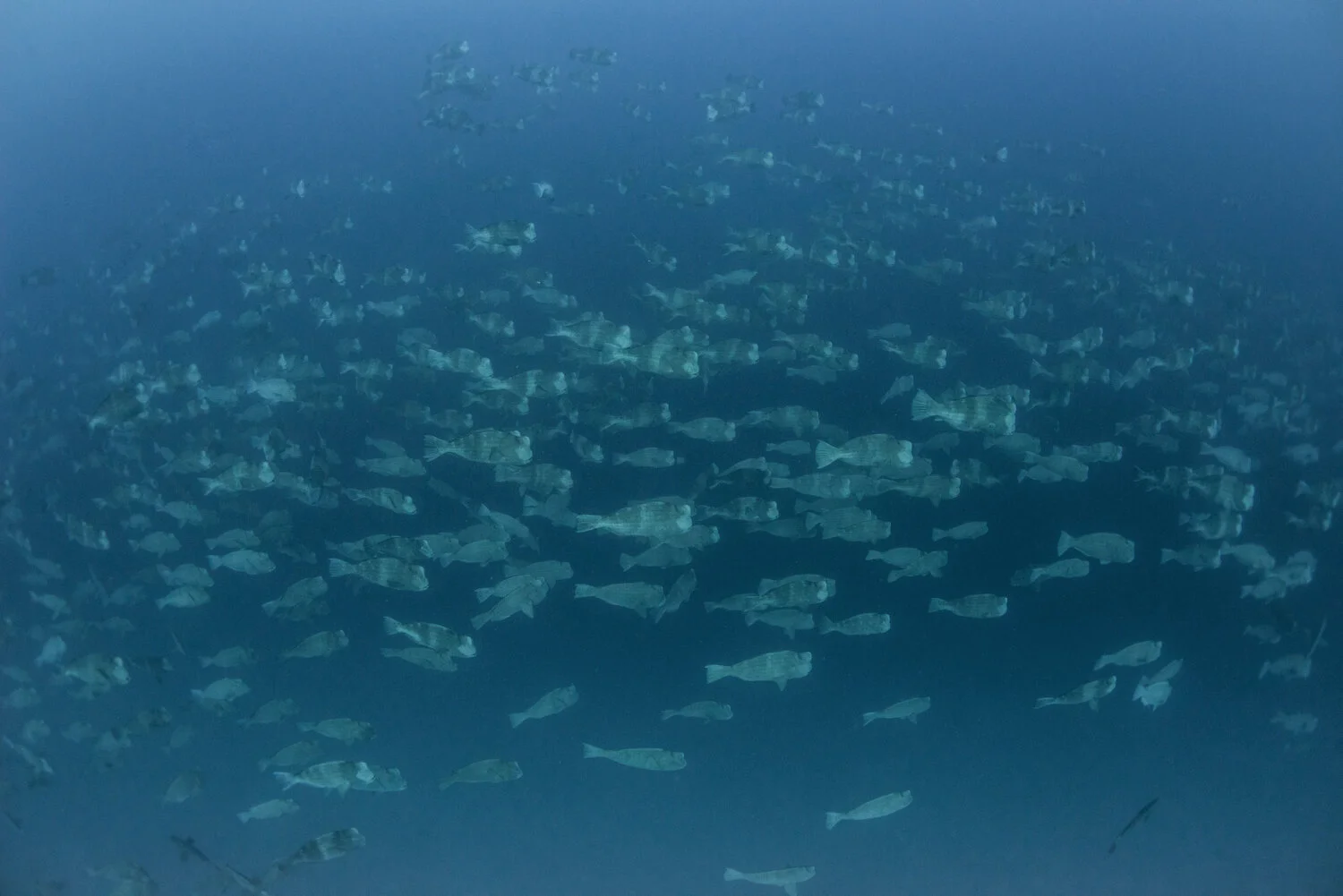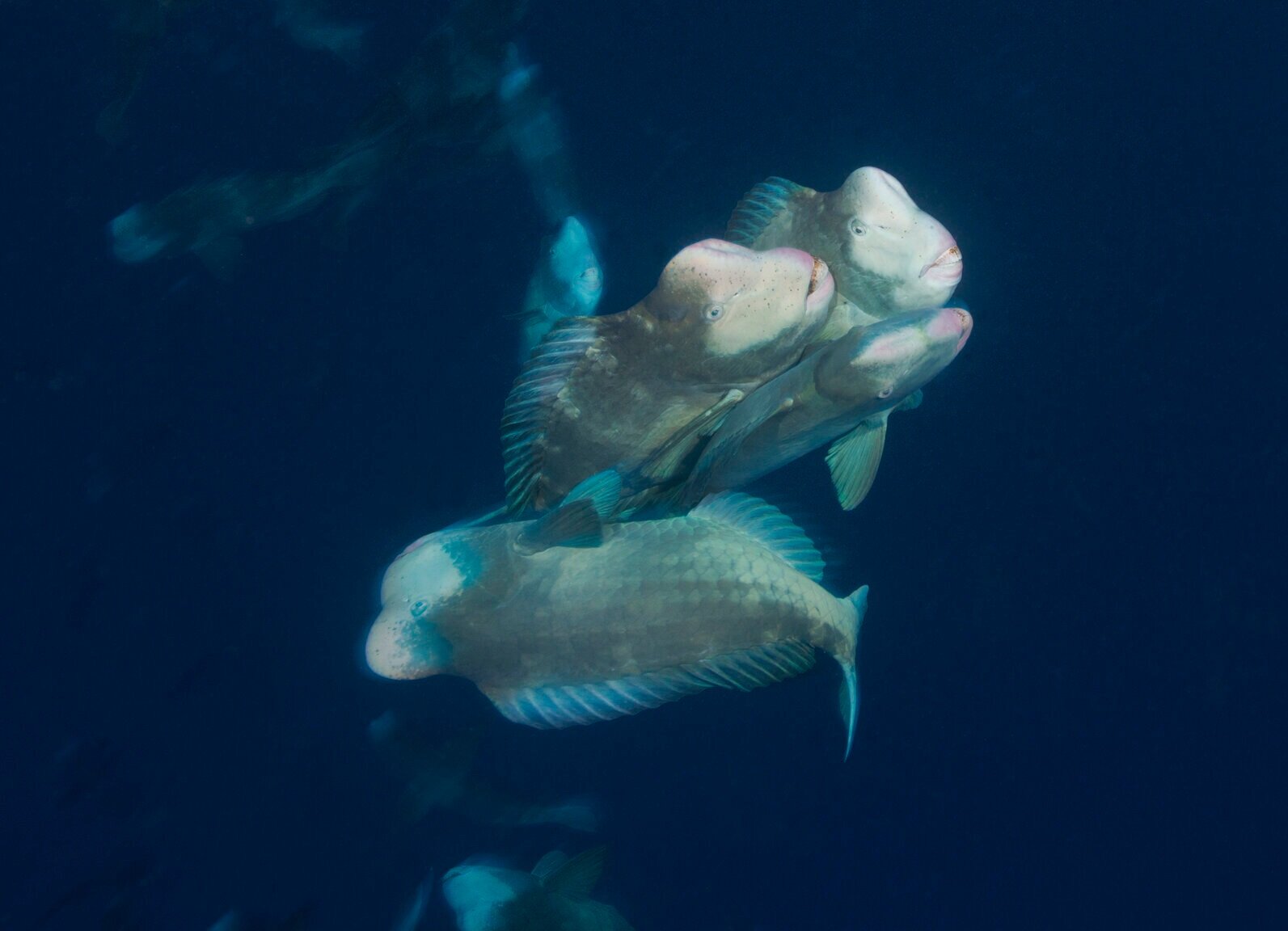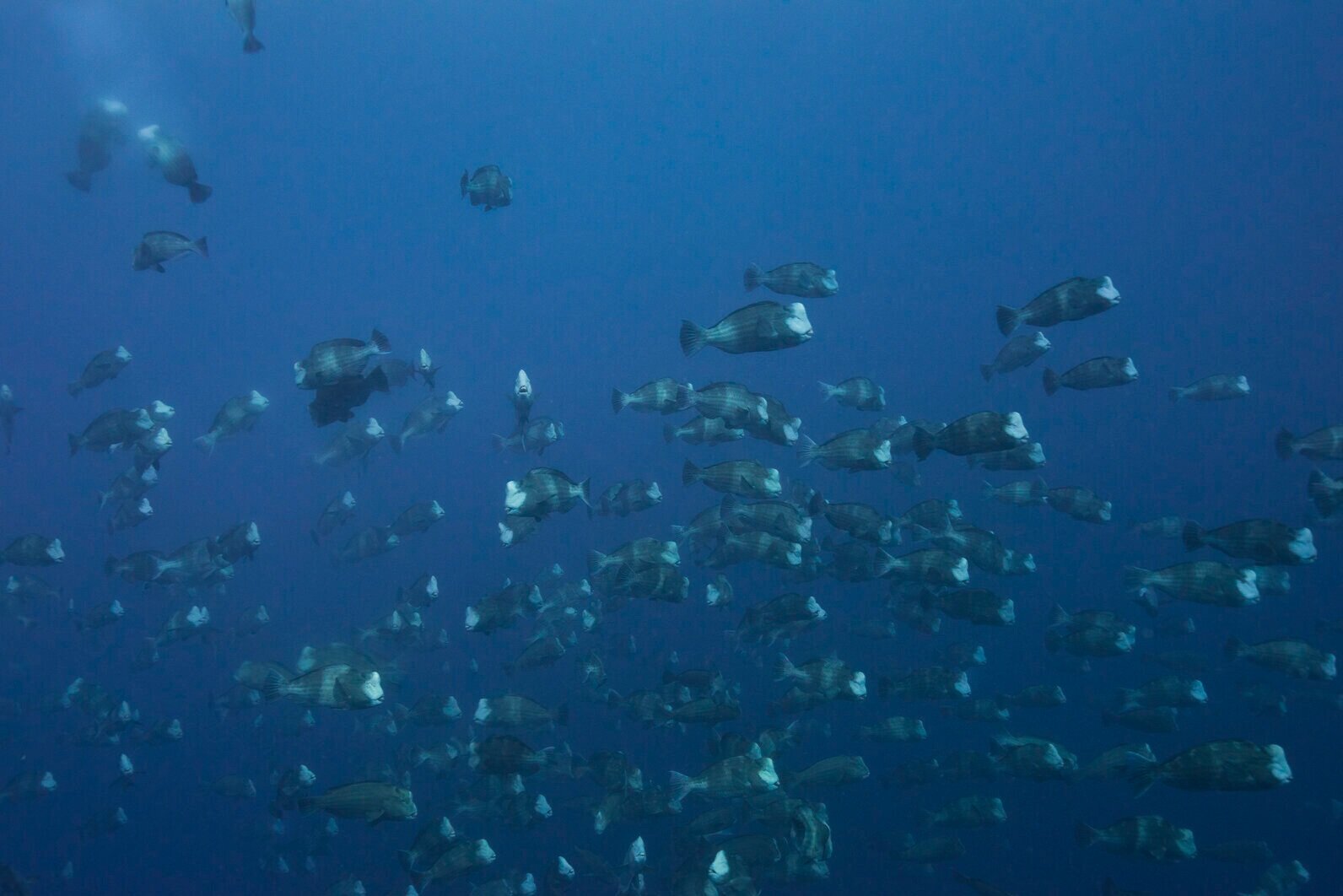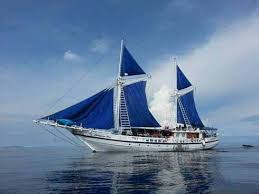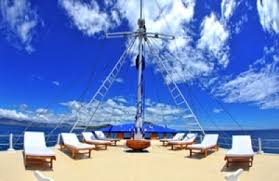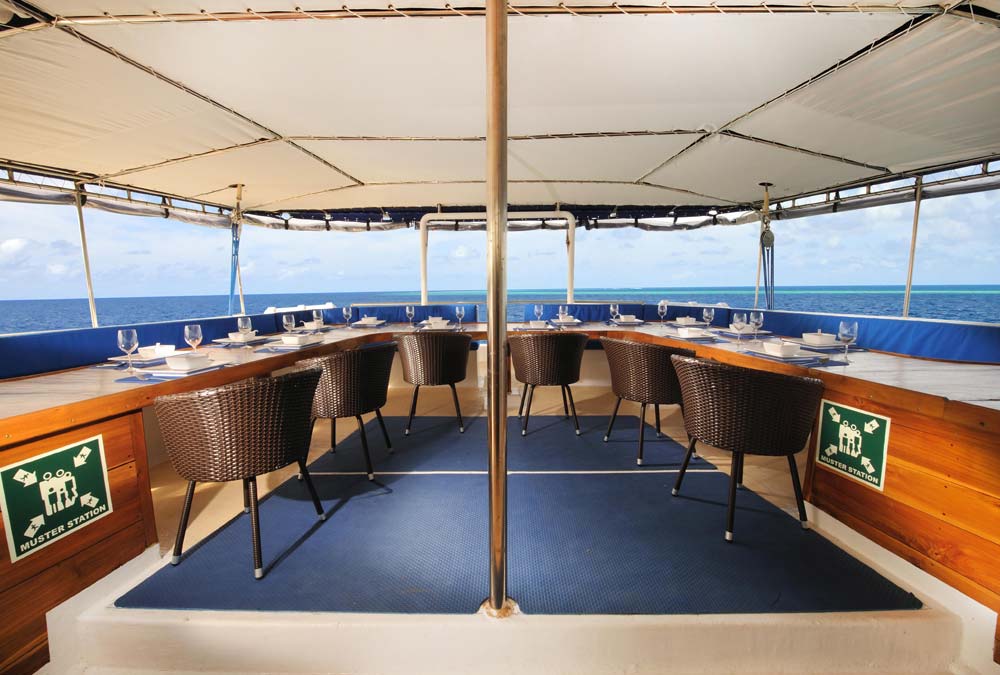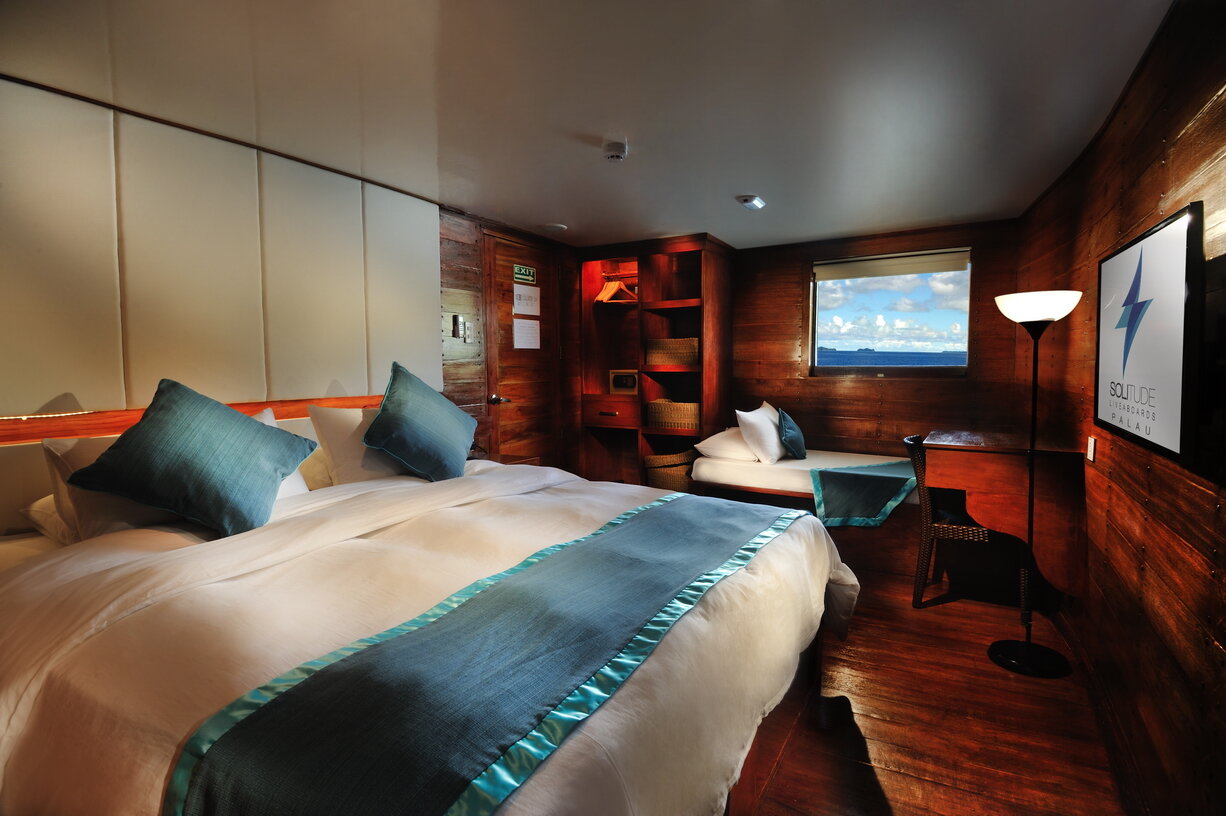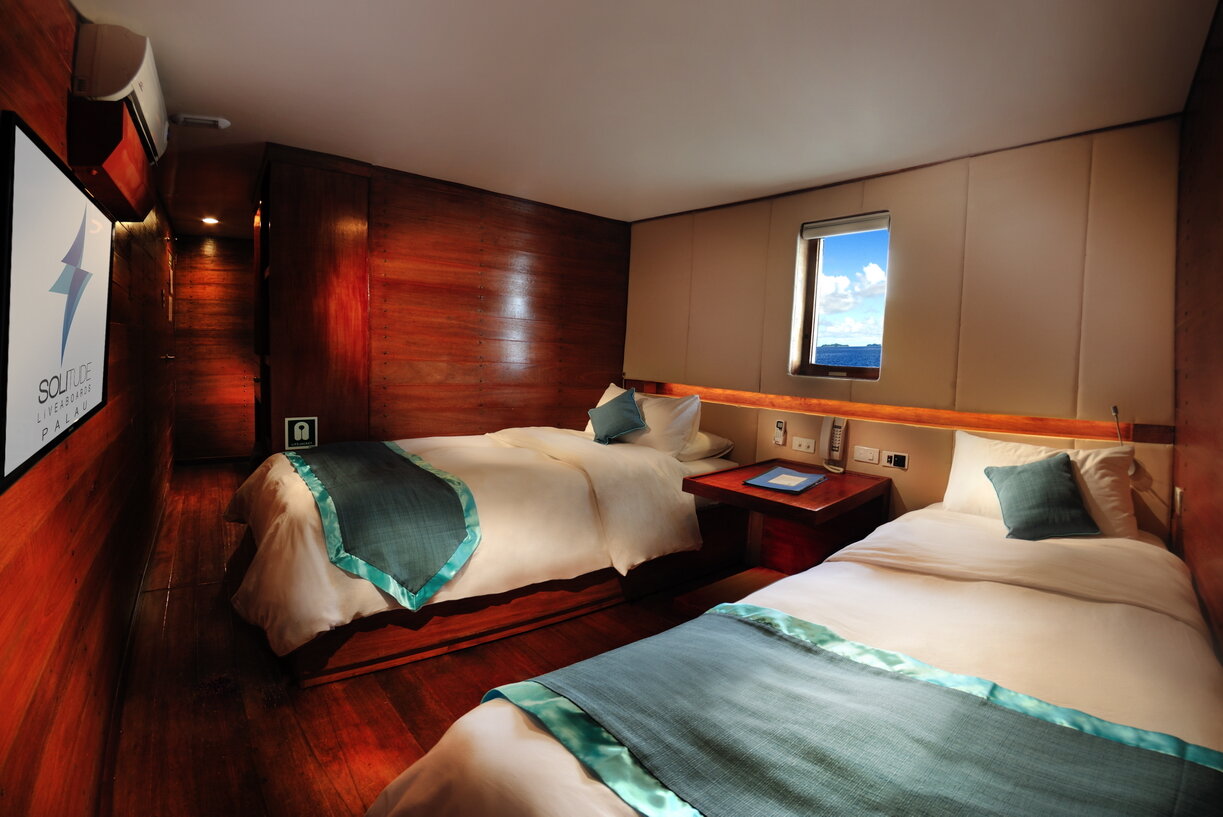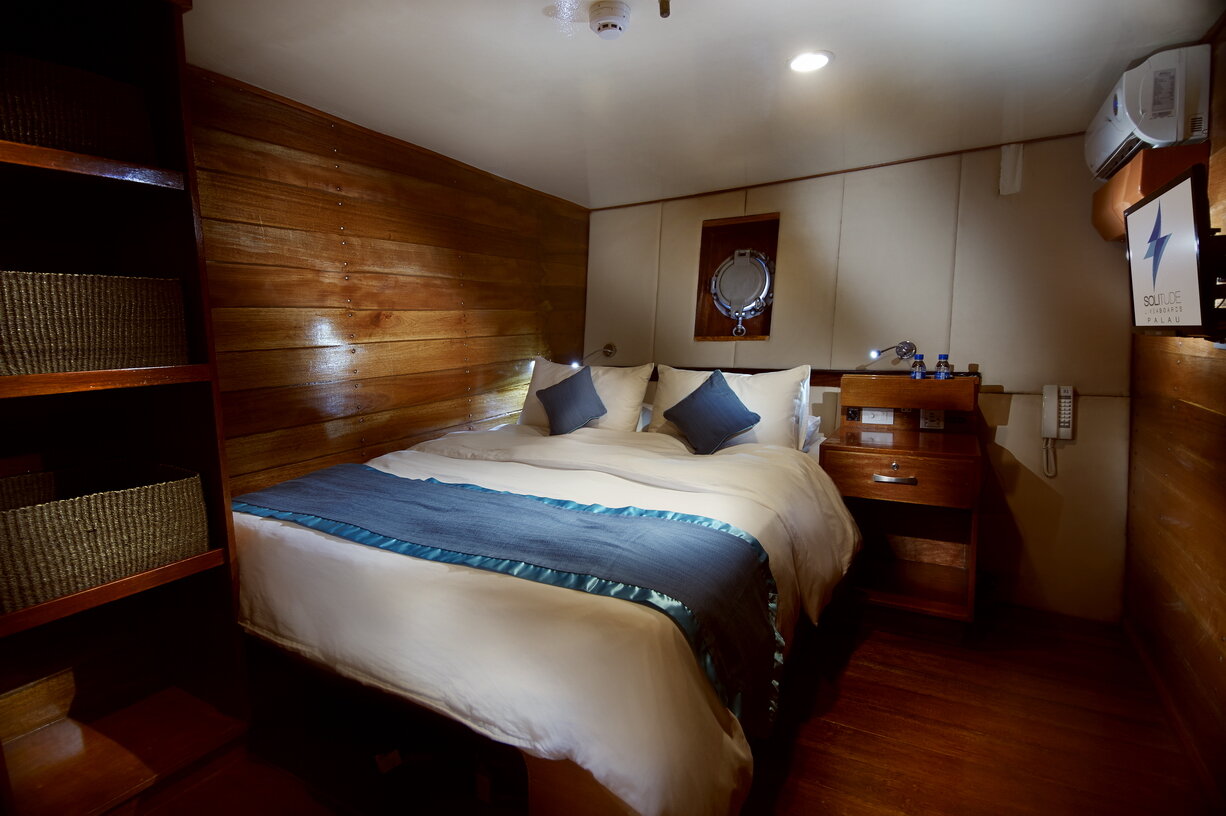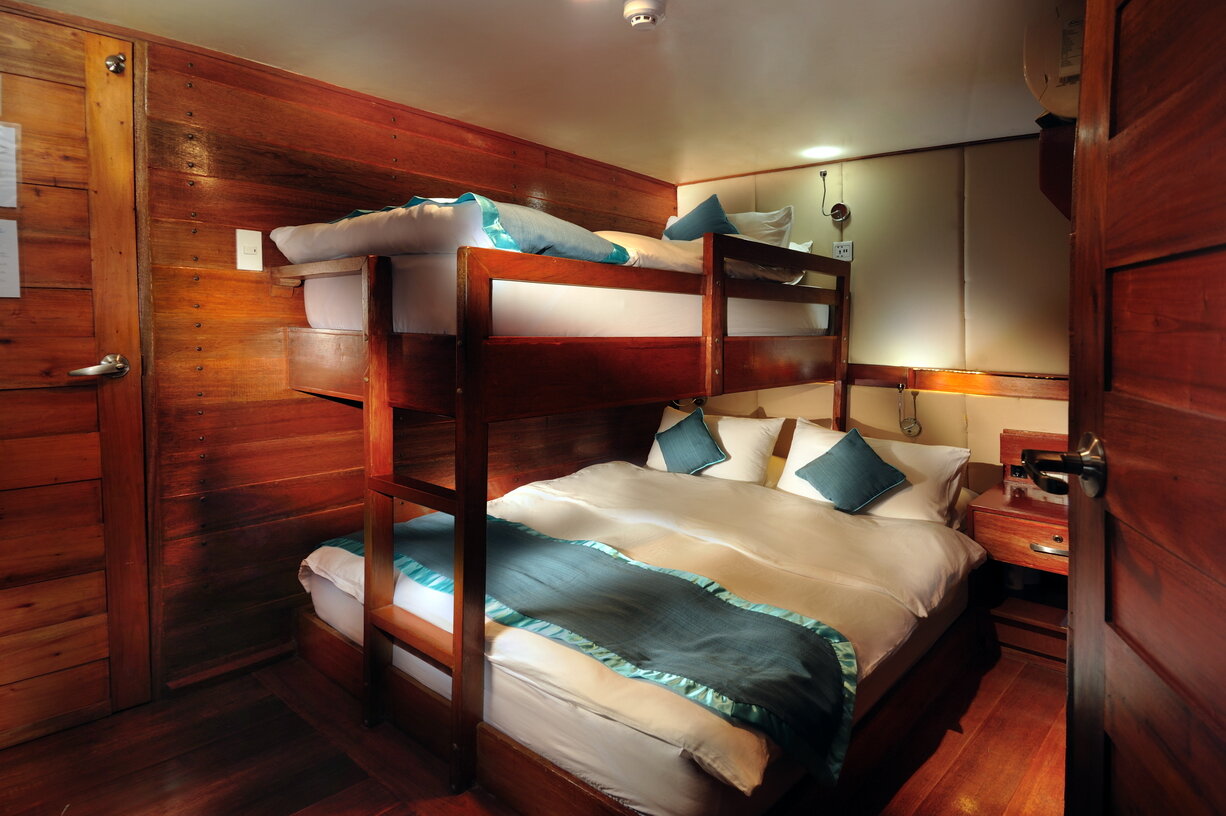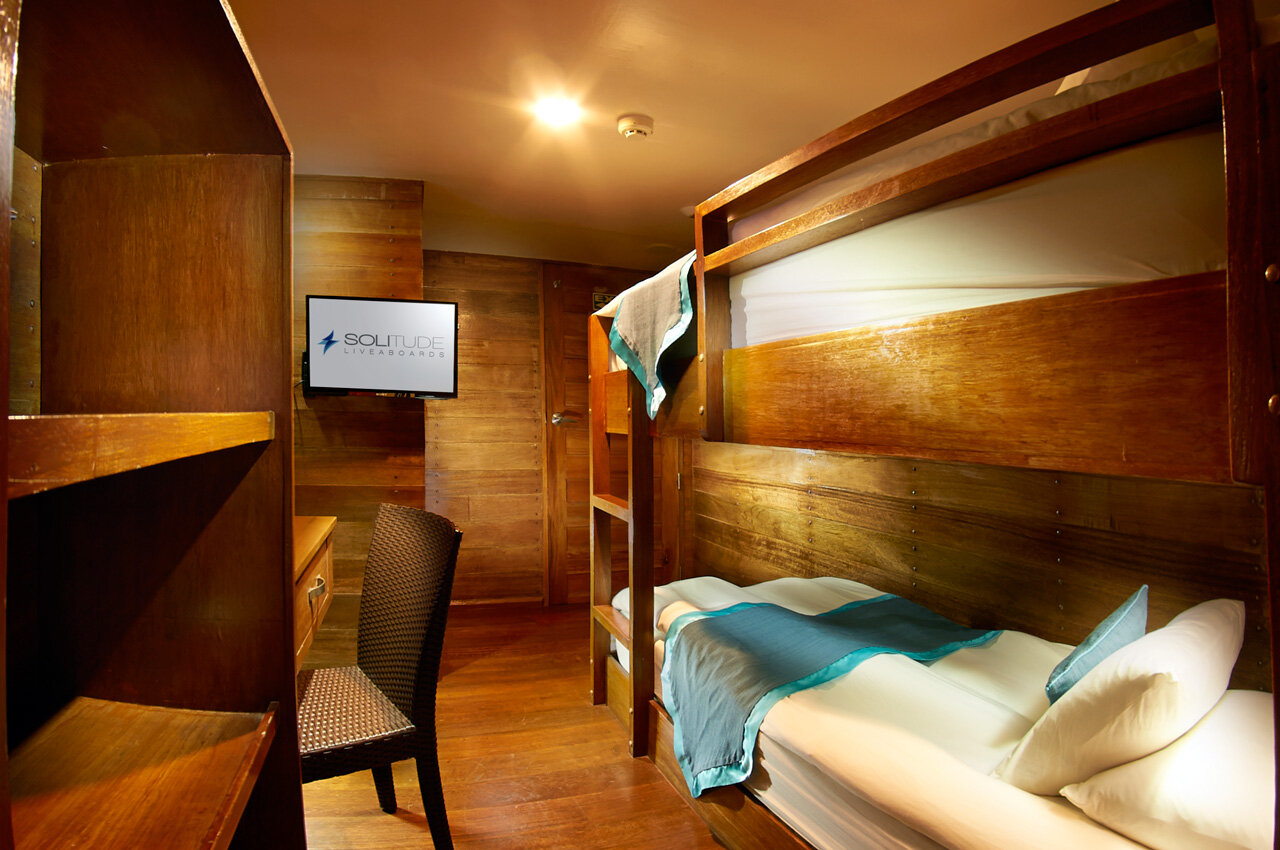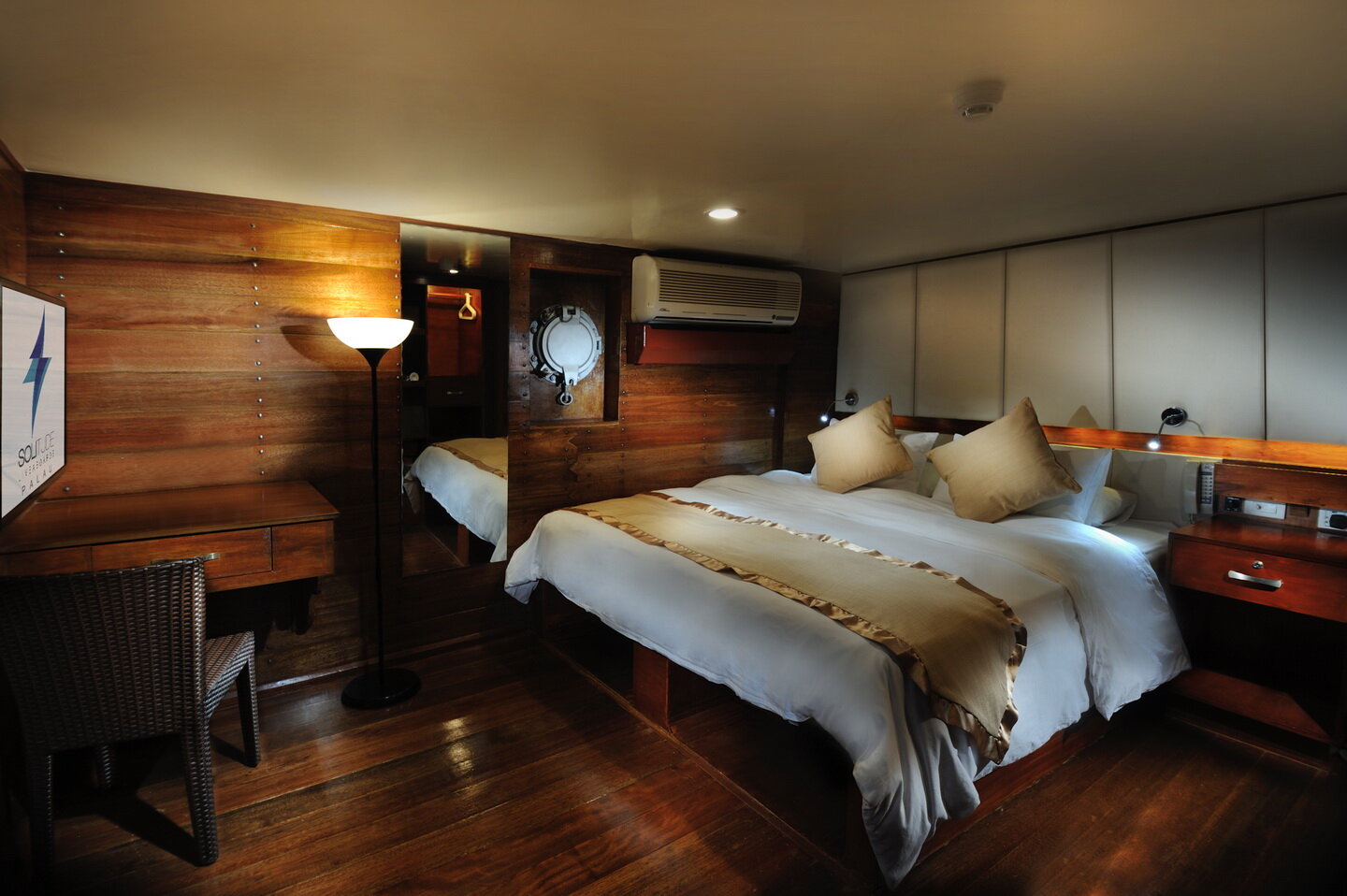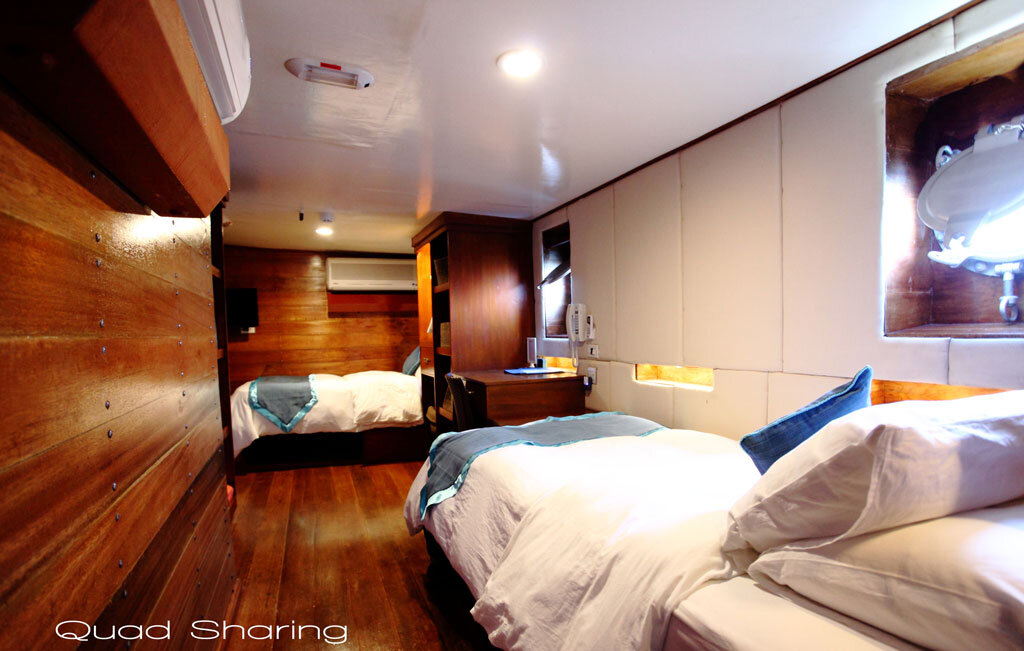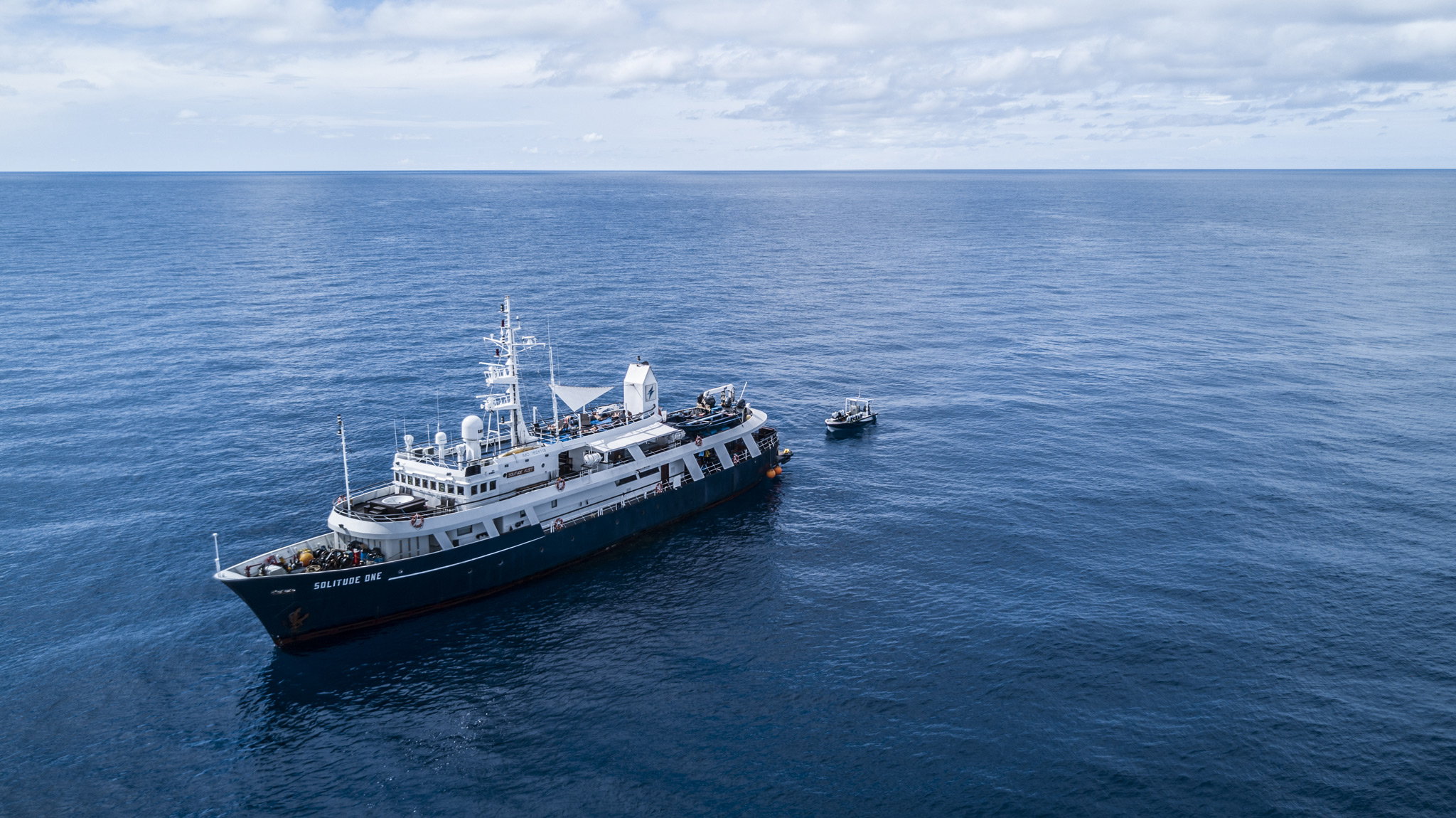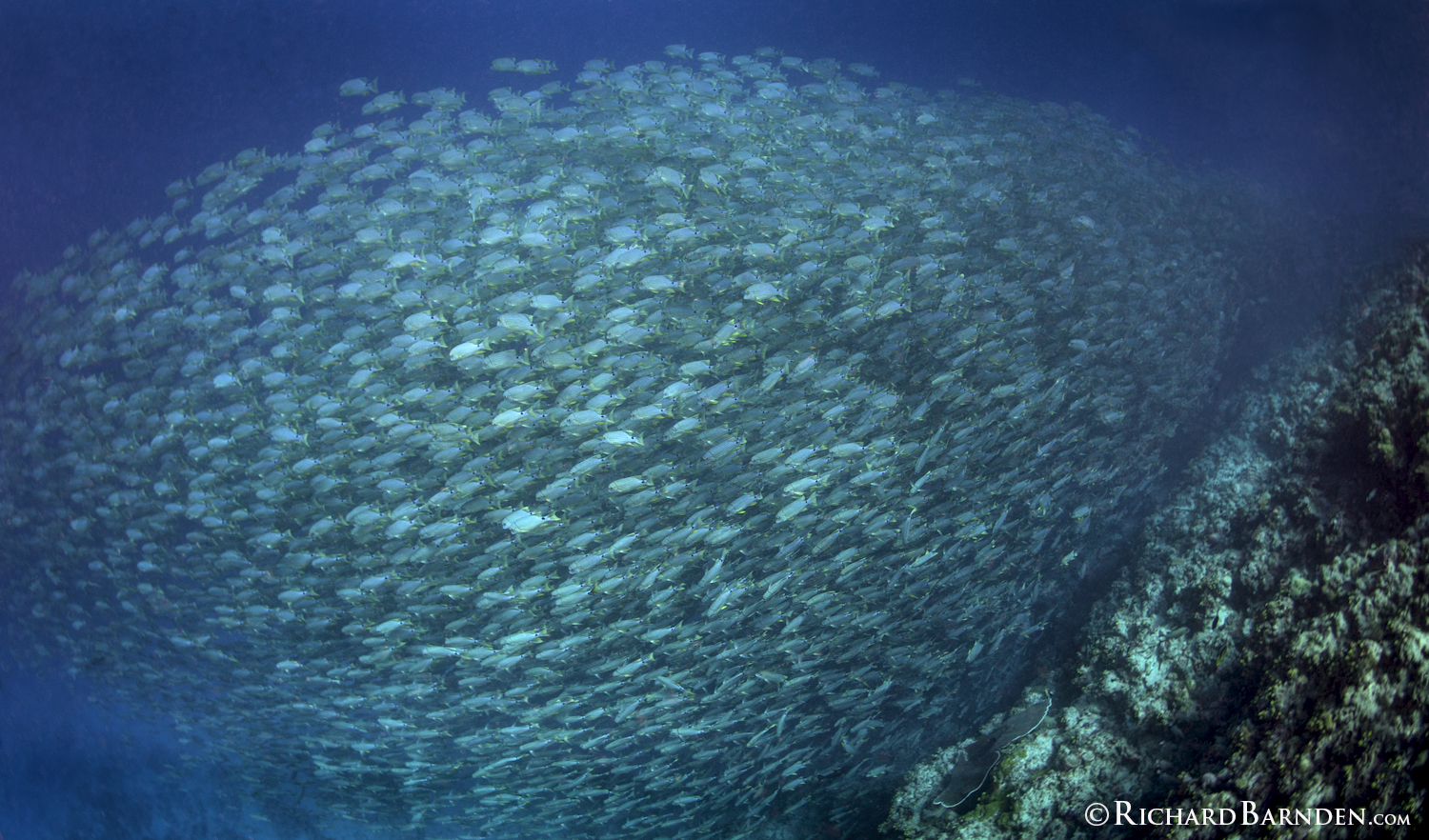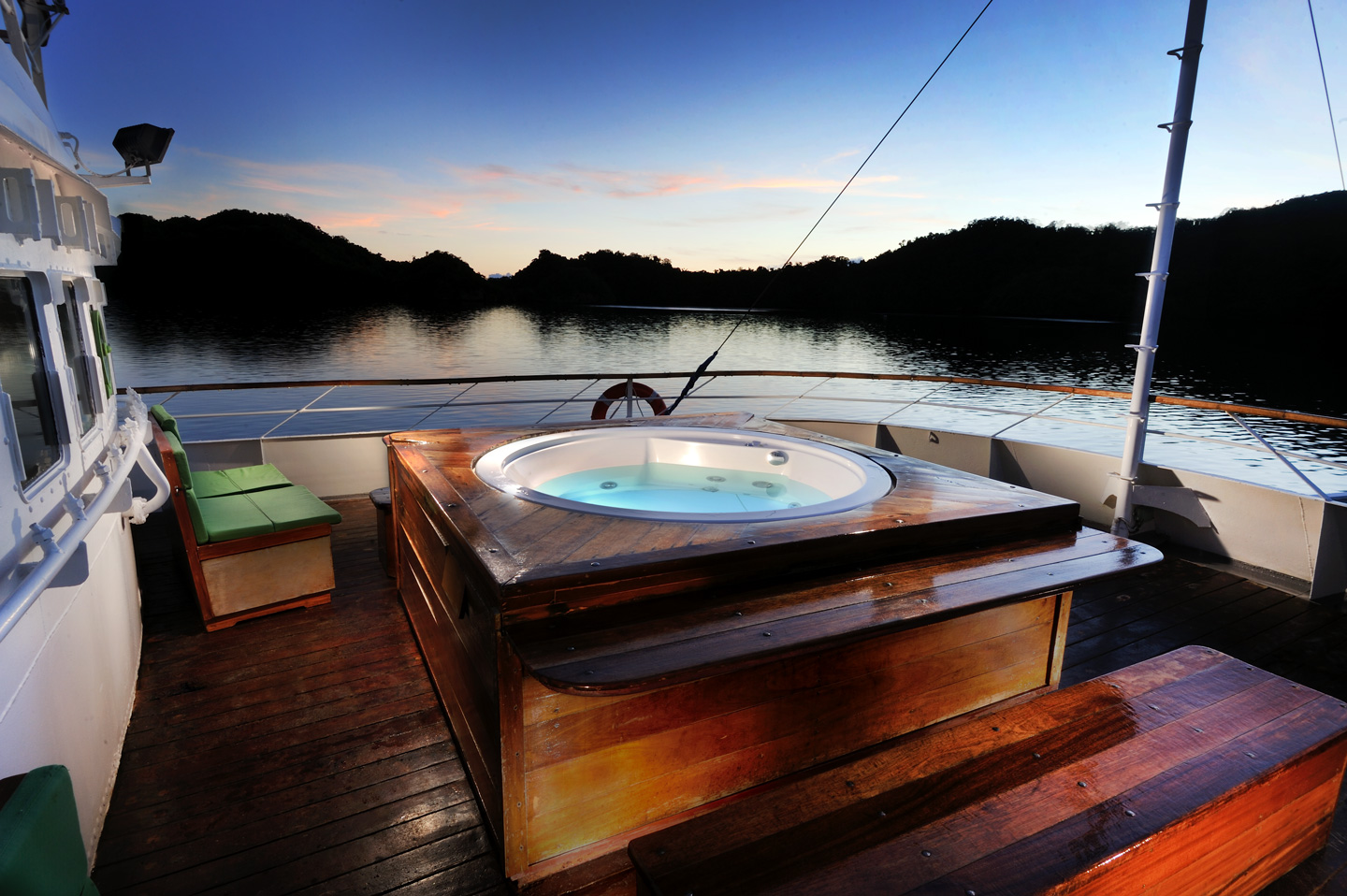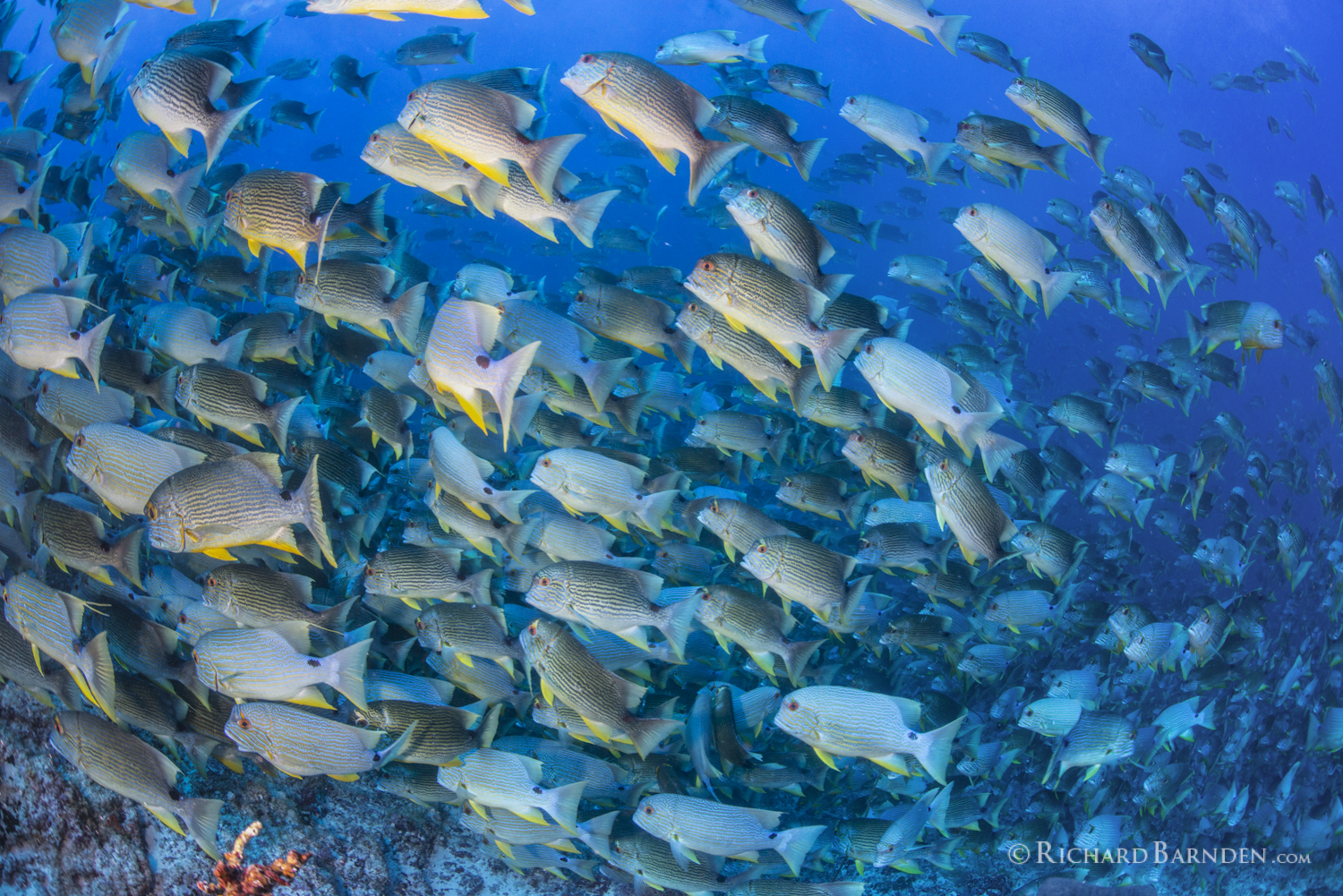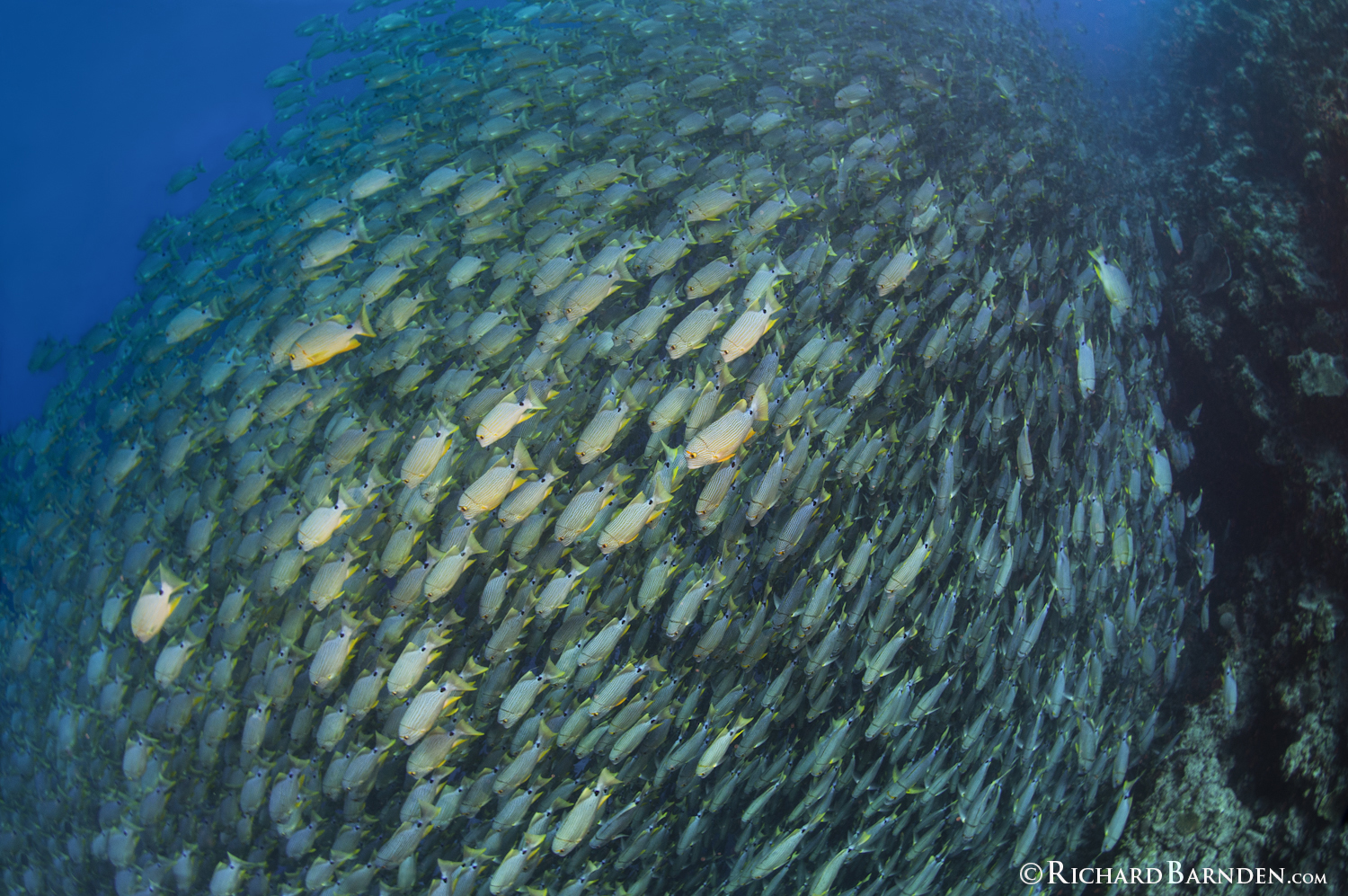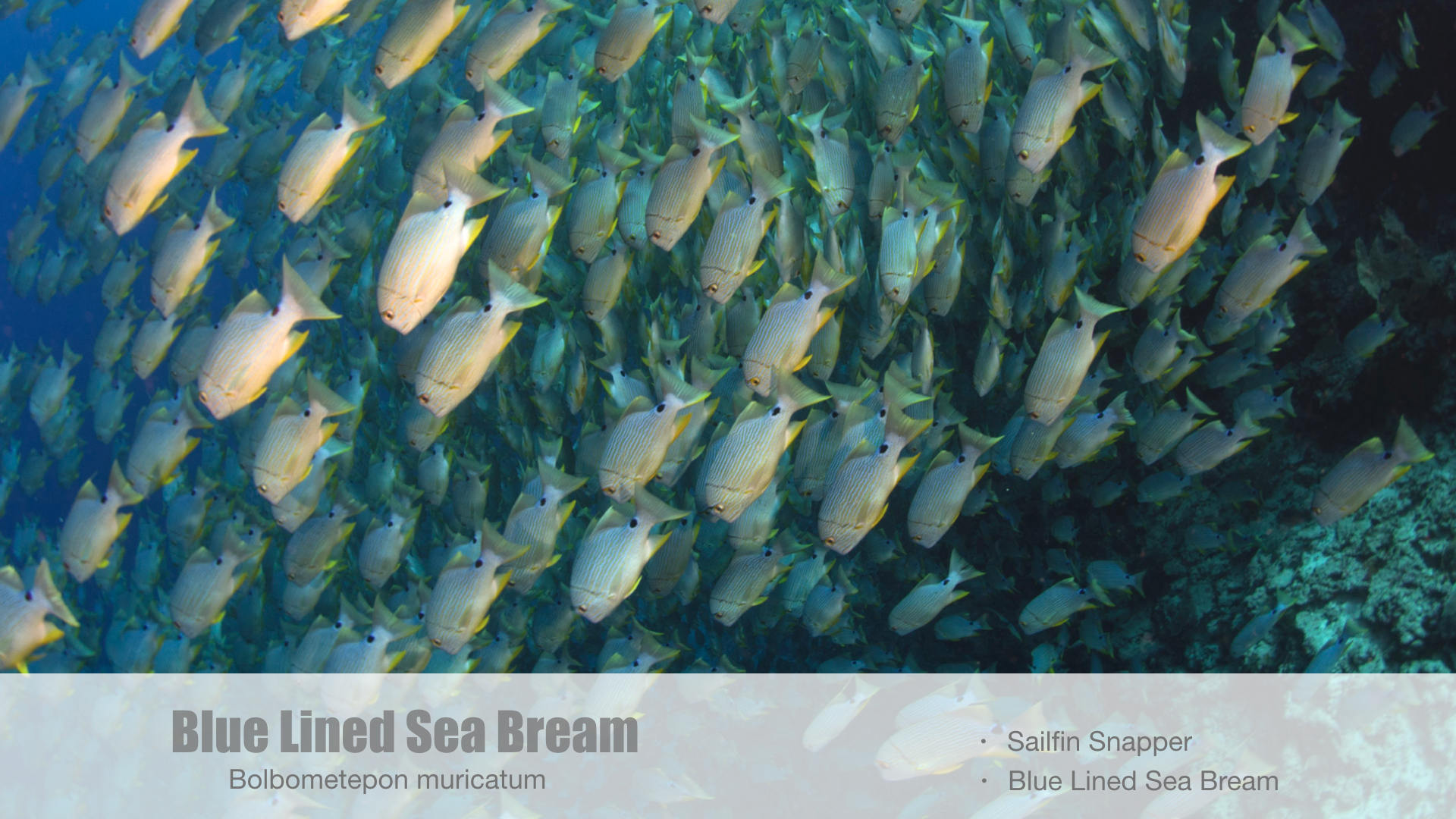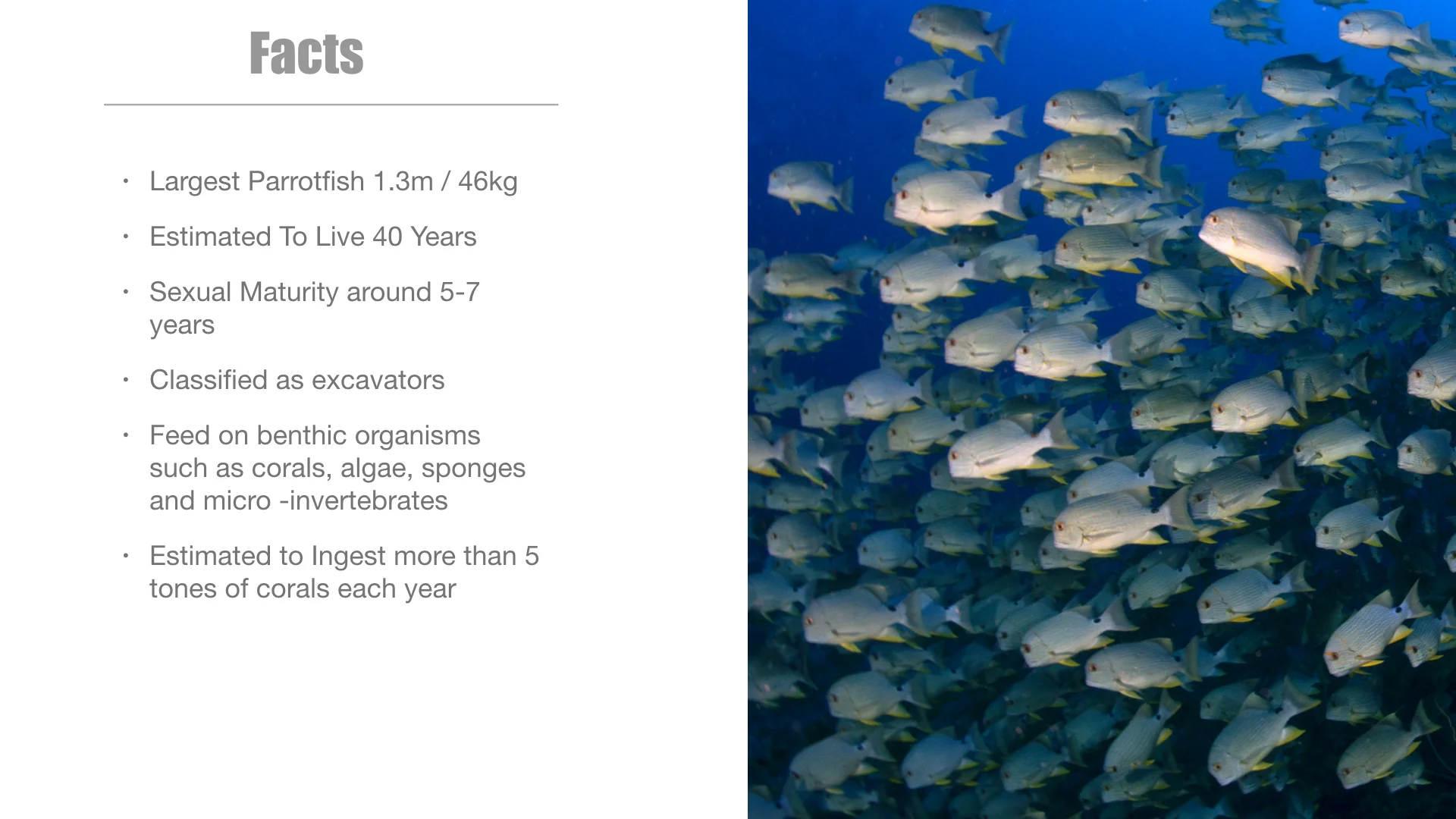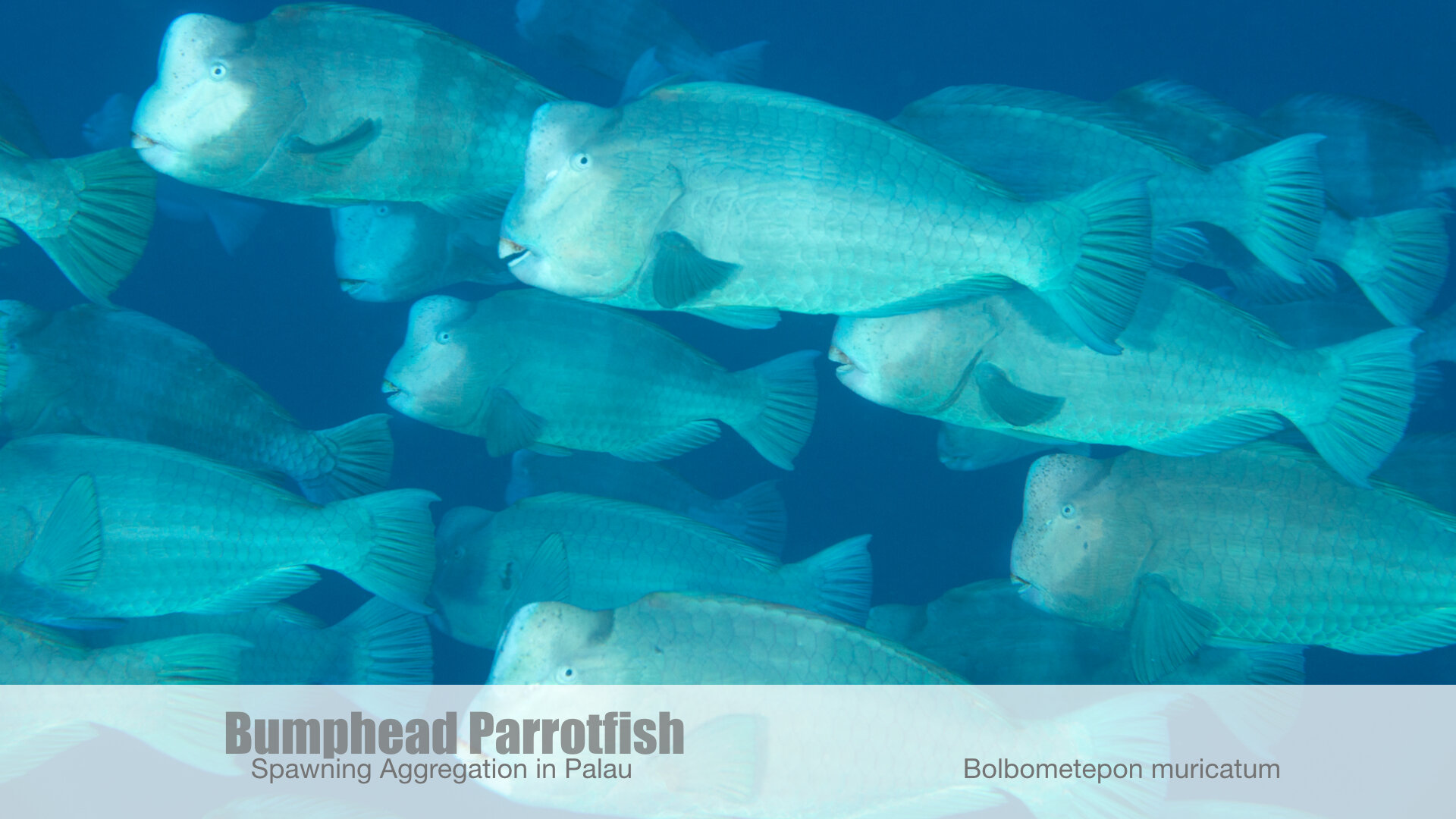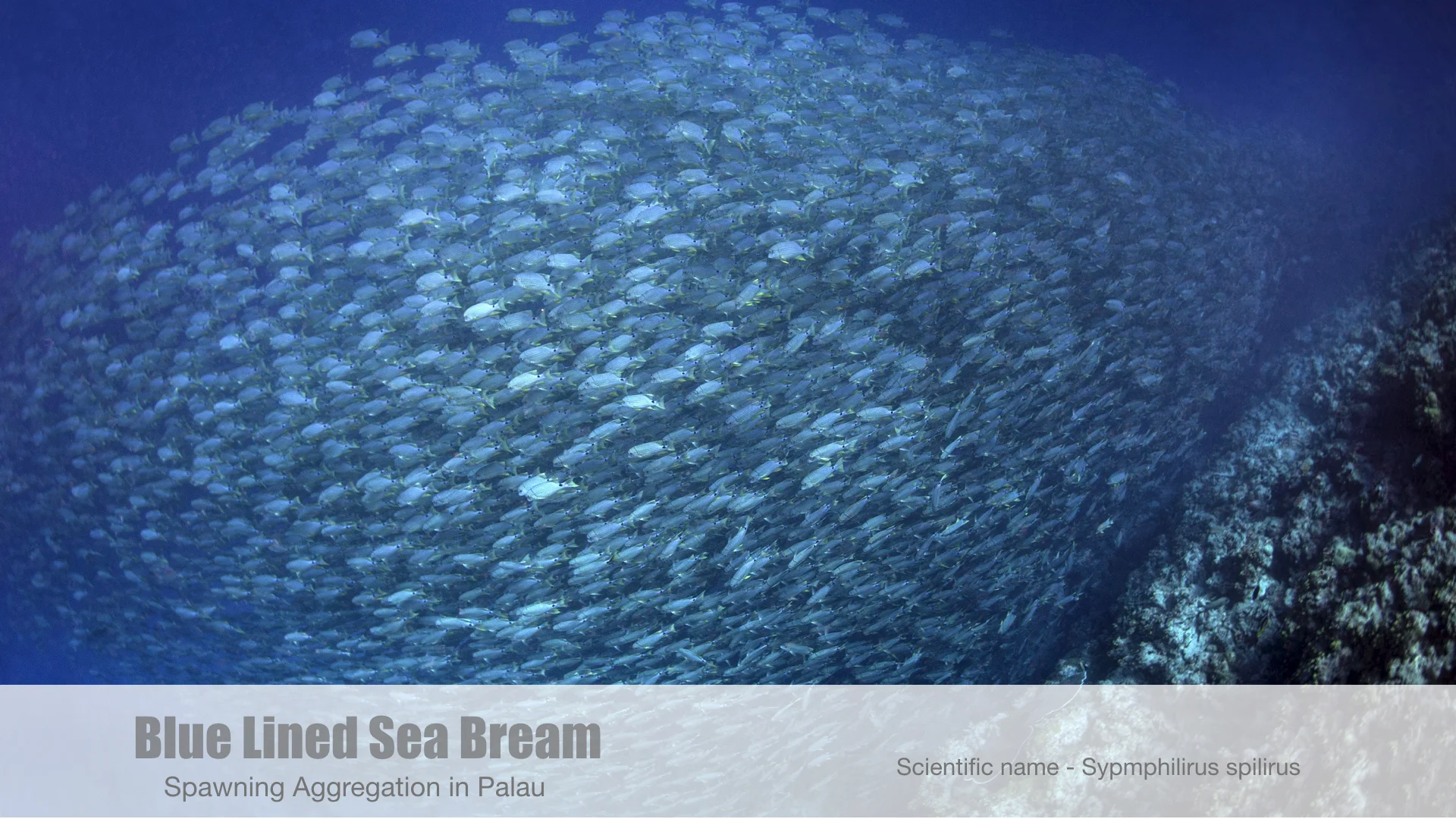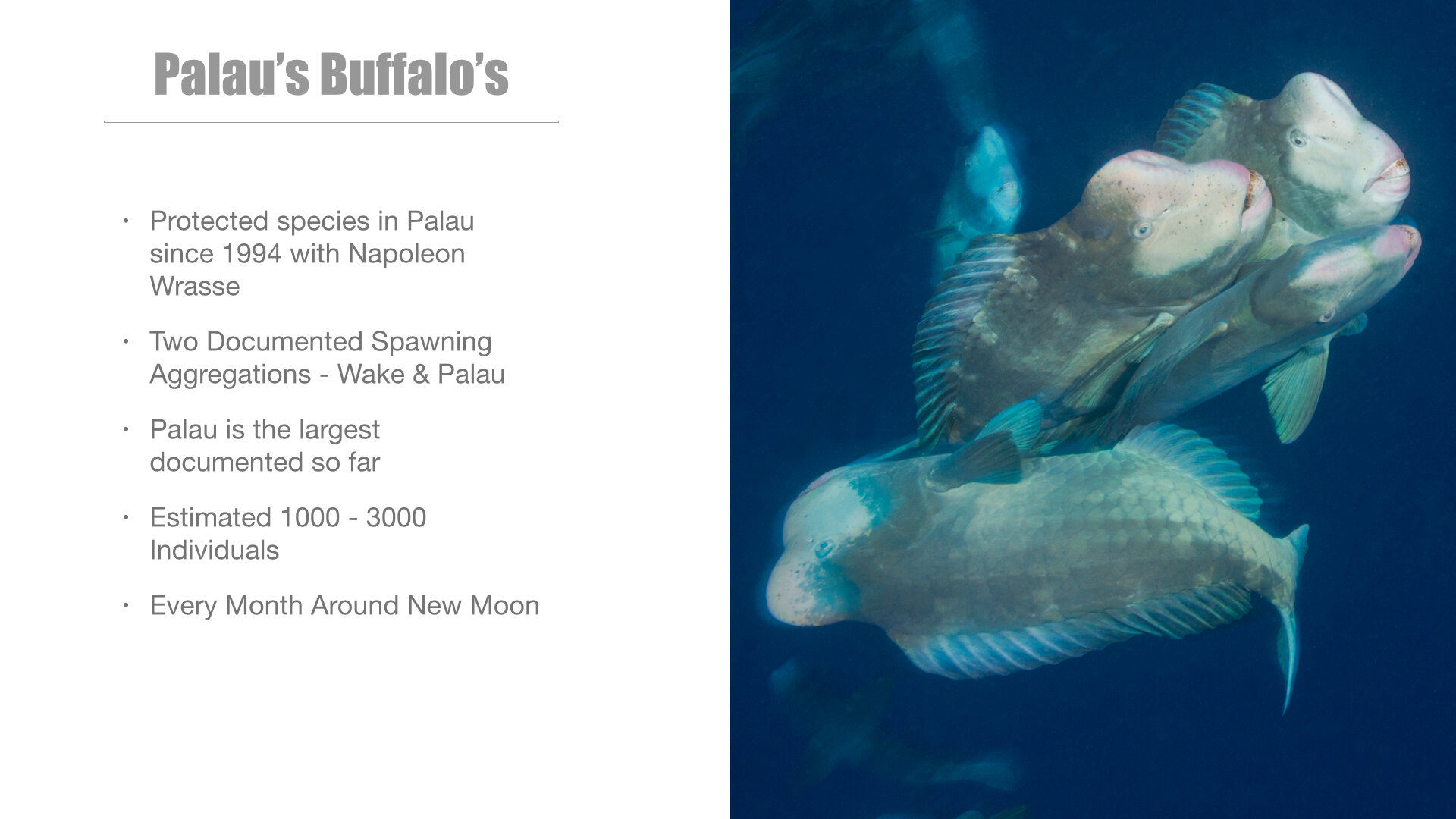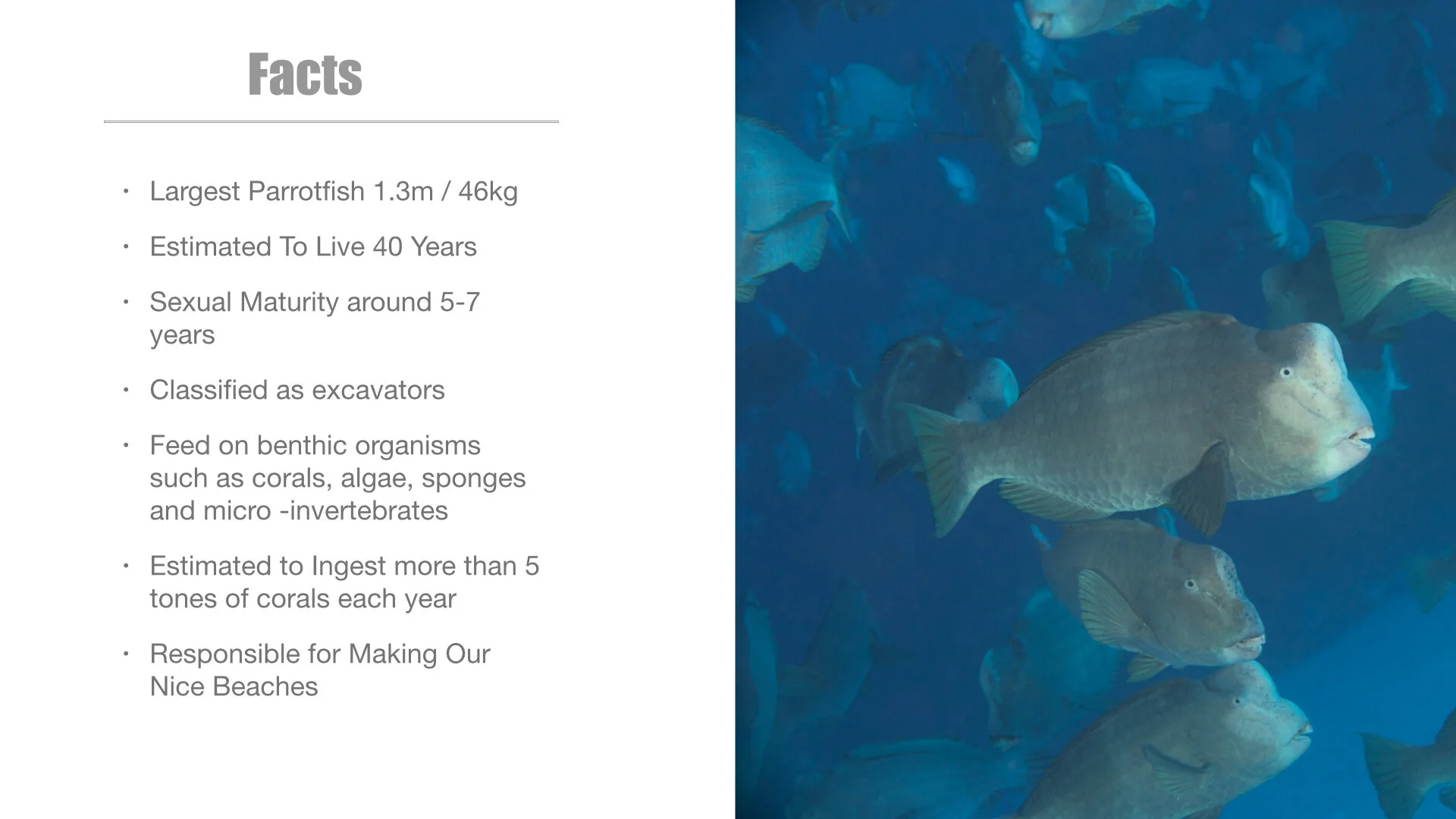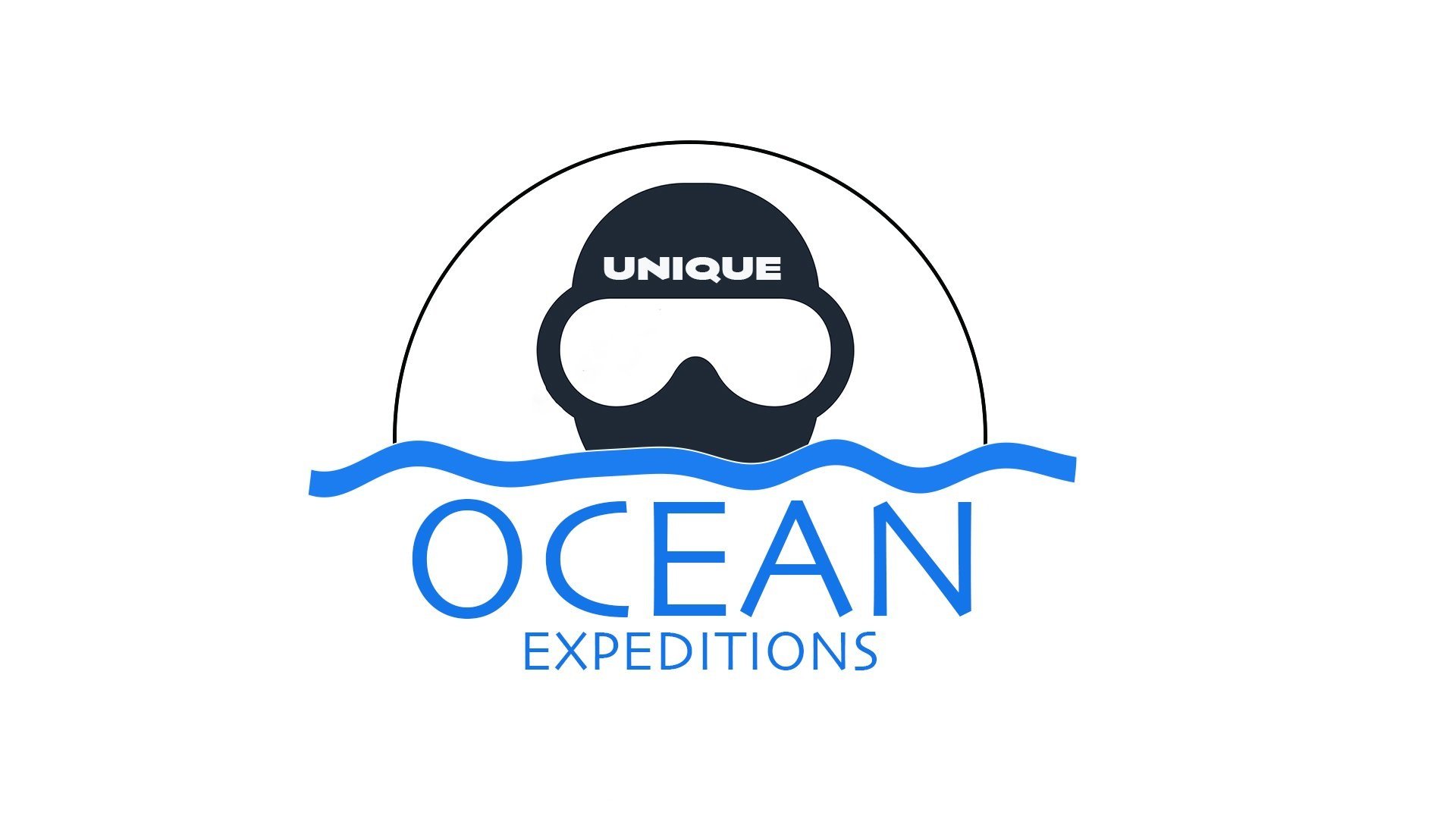PALAU
BLUE LINED SEA BREAM COMBO
BLUE LINED SEA BREAM AND BUMPHEAD PARROTFISH COMBO SPAWNING EXPEDITION
THE EXPEDITION
This COMBO spawning expedition is a double spawning trip of the Blue Lined Sea Bream and the Bumphead Parrotfish. This is a special spawning trip as it is only possible to do this expedition twice a year once in March and once in April. Both options of either a Live-aboard expedition or a Land-based expedition are possible. Early morning and optional late night dives are involved on this expedition.
The expedition will begin with the spawning of the Blue Lined Sea Bream. This is the largest aggregation of Blue Lined Sea Bream so far discovered on the planet, you can witness more than thirty thousand individual fish gather here for the purpose of spawning. After four or five days we will begin watching the bumphead parrotfish spawning. This is the largest aggregation of bumphead parrotfish so far discovered on the planet, you can witness more than one thousand individual fish gather here for the purpose of spawning. You will get to dive with two of the biggest aggregations of those species discovered on the planet so far, something quite special.
After spawning is finished we continue diving the rest of Palau’s amazing reefs with manta rays, plenty of sharks, cavern’s, holes, swim throughs and jellyfish lake.
PALAU
Most dive sites in Palau are world-class, with underwater features like blue holes, drop-offs, caverns, caves and channels. Visibility often seems endless and can go up to 100ft (30m) on good days. For wreck dives nearer to Koror though, do expect only 15-45ft (5-15m) of visibility.
Palau can be dived year-round but it tends to rain frequently during July to October. Water temperature is usually warm at a range of 81-86°F (27-30°C) and a 3mm wetsuit will suffice. However during some months its possible to have cold thermoclines dropping down to 65-70F (23-26C). For Land-based divers most of the dive sites are located about 45-60 minutes away by speed boat from Koror with the key areas for diving concentrated around the islands of Ngemelis and Peleliu.
With the strong currents of the Pacific Ocean sweeping through Palau, most of the dive sites are recommended for divers with experience. A reef hook is critical to have for several dive sites at the outer walls of the barrier reef, especially at the world-famous Blue Corner.
Shipwreck enthusiast will be spoilt for choice in Palau as there are many sunken remnants around Koror from World War II. Many are easily accessible and intact, and divers can take their pick from cargo ships, transport vessels, navy destroyers and Japanese Zero planes.
BLUE LINED SEA BREAM
Leading up to the new moon tens of thousands of Blue Lined Sea Bream (Symphorichthys spilurus) are gathering around Palau’s outer promentories preparing to spawn. We begin our expedition before the half moon diving some of the big name sites with currents in preparation for the main event. These dives are early morning starts, as the sun rises, we will begin the dive to watch the spectacle that is about to unfold. A huge aggregation of snapper will rise from the deep, to ensure the continuation of their species. Witnessing this natural behavior--which only can be described as an underwater firework display of energy and excitement--also attracts the biggest predators in Palau such as Bull sharks and Oceanic blacktips.
BUMPHEAD PARROTFISH
Leading up to the new moon hundreds of Bumphead Parrotfish (Bolbometepon muricatum) are gathering around Palau’s outer reefs and channels preparing to spawn. We begin our expedition before the new moon diving some of the big name sites with currents in preparation for the main event.
These dives are early morning starts, as the sun rises, we will begin the dive to watch as the spectacle unfolds. A huge aggregation of Bumphead parrotfish will spill from the lagoon into the dive site like a waterfall, to ensure the continuation of their species.
Witnessing this natural behavior--which only can be described as some kind of majestic dance is a must see.
PALAU SIREN
LIVE-ABOARD
SOLITUDE ONE
LIVE-ABOARD
ALL LIVE-ABOARD RATES ARE BASED ON PER PERSON.
AVAILABLE DATES
2025
2026
ALL EXPEDITION DATES
ALL DATES ARE BASED AROUND MOON PHASES AND TIDES
PRICE BREAKDOWNS
INCLUDES
7 or 10 days of Diving
All meals - Liveaboard Only
Transport to and from Diving Shop
Airport Transfers
EXCLUDES
International & Domestic Flight
Park Permits
Gratuities
Rental and Dive Gears
LIVEABOARD
S/Y PALAU SIREN
LIVEABOARD
M/V SOLITUDE ONE
DIVE INFORMATION
WATER TEMPERATURE - 27c / 85F
WETSUIT - 3mm / 5mm
Blue Corner, one of Palau's most magical dives, is known for its sheer abundance of underwater life and reef configuration – the corner sticks out into the open ocean and then drops to the depths. Divers are dazzled by the incredible variety of fish, including barracudas, jacks, Napoleon wrasses and schooling grey reef sharks. Strong tidal currents render it a dive for the more experienced – a reef hook is a must to remain stationary in the current.
Blue Holes, may well be Palau's most scenic dive. It features four vertical shafts that open on the top of the reef and descend to a large cavern that exits on the outer wall at about 25m. Drifting down the shafts is a delight, especially when the sun is high. Dancing rays of sunlight flood through these openings and play with the blue hues. Schools of fish patrol the huge bottom exit, with dark blue ambient light as a background.
German Channel, Given the right set of circumstances, a dive at German Channel can be an unforgettable experience. Manta rays regularly visit this channel, which was blasted by the Germans to ease boat passage during their 1899 to 1914 Palau occupation. The mouth of the channel features some nice sandy areas with small cleaning stations, where mantas (usually two to five individuals) come to have parasites removed by little cleaner wrasses in less than 20m of water.
Peleliu Island, If you'd like to temporarily escape the relative hustle and bustle of the capital, the small coral island of Peleliu, in the south of the archipelago, offers a tranquil option. There's only one village – Klouklubed – and often it will seem like you've got the entire island all to yourself. The diving here is concentrated around the south East tip of the Island. Deep walls, strong currents and an abundance of fish life make this one of Palaus best dive locations.
Ulong Channel, is one of most thrilling dives in Palau. Divers start at the mouth of the channel, which consistently sizzles with fish action. Divers usually hook themselves to the reef to see hunting grey and whitetip sharks, jacks, barracudas and groupers, before drifting with the current along the channel. The seascape is incredibly scenic: the sea floor is carved by large parallel-running white-sand valleys, bounded by healthy coral formations and dotted with massive sections of sprawling lettuce corals.
Siaes Corner, When the tide is running and the month is right you can see more than 300 grey reef sharks here. Siaes Corner is a current-swept point that plunges vertically to about 50m. After jumping in the water, divers drift along the wall to the corner. As you reach the corner, you attach your hook to a dead coral to watch for electric fish action, which usually includes grey sharks, blackbar barracudas, jacks, bumphead parrotfish, anthias and fusiliers.
Shark City, is the outer most promentory in Ulong and sometimes one of the best dives in Palau. Conditions are similar to Peleliu with strong current and action dives along with high rewards such as bull sharks, oceanic blacktips and pelagic encounters. The corals and reef life is also spectacular.
SPAWNING DIVE INFORMATION
EARLY MORNING STARTS
POTENTIAL CURRENT DIVES
The Blue Lined Sea Bream (Symphorichthys spilurus) can be seen during the months of March, April and sometimes May. These strange but beautiful looking fish form one of Palau’s largest recorded spawning aggregations to date. A rarely seen fish on the reef these normally solitary fish hide inside the lagoon or on deep sandy drop off’s, feeding on crustaceans hidden in the sand and normally away from the eyes of divers.
As their spawning season approaches individuals start gathering in two main areas of Palau. One in the North West side called Tailtop and one in the South, around the island of Peleliu. This aggregation can reach up to 50,000 fish and just seeing the size of the school when its together can be more impressive than the actual spawning event itself. When the correct formula of month, day, tide and time come together the Sea Bream are ready to spawn.
The school moves from its aggregation area to an area with current, taking their gametes to safety. From 60m to 15m the school becomes a tight mass of yellow fusion and the fish begin spawning. Bullsharks (Carcharhinus leucas), Blacktip sharks (Carcharhinus limbatas) and often lemon sharks (Negaprion brevirostris) are seen slowly swimming through the school waiting for a tired fish to pick off.
PRESENTATIONS
During your stay with us your Expedition Leader and Location Expert will be working together delivering you in depth presentations regarding the biology of what we are witnessing. These presentations have taken years to formulate and develop and what makes part of our collaboration with Unique Dive Expeditions so special.
PHOTOGRAPHY WORKSHOP SKILLS
RICHARD BARNDEN from Richard Barnden Photography will be leading this expedition and sharing his knowledge and skills of shooting these spawning events. Richard has dedicated the last ten years of his life learning and discovering some of these unique events. Each evening Richard will give in depth presentations about the following days diving along with photography tips on things like settings and compositions.
Photographing spawning events can be extremely challenging throughout our workshop I will be there to give hands on experience on some of the following topics
SKILLS EXPLORED
Equipment and Photographic Gears
Spawning Environments
Settings for capturing spawns
Lighting - Ambient Light
Lighting - Strobes
Settings and Compositions
